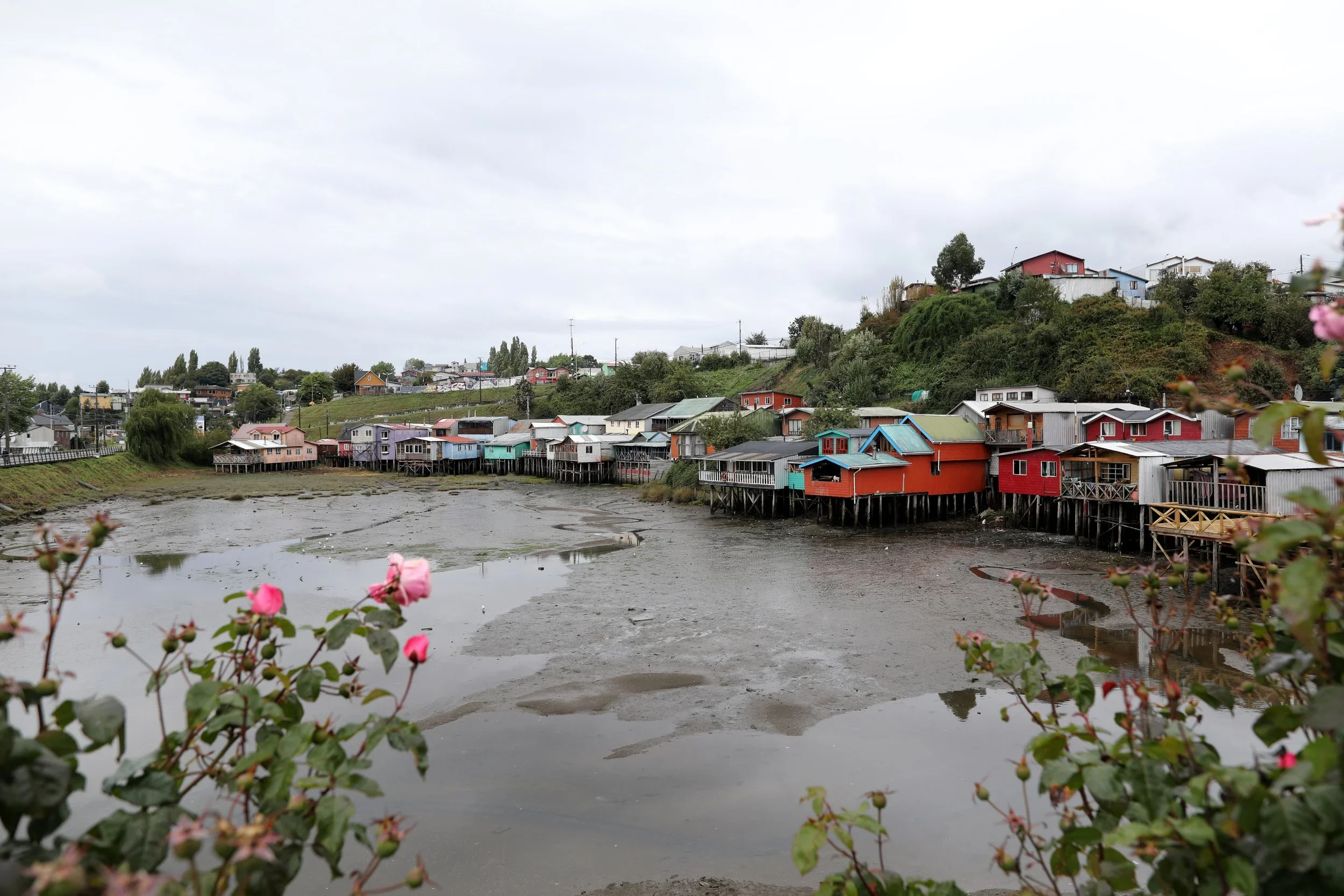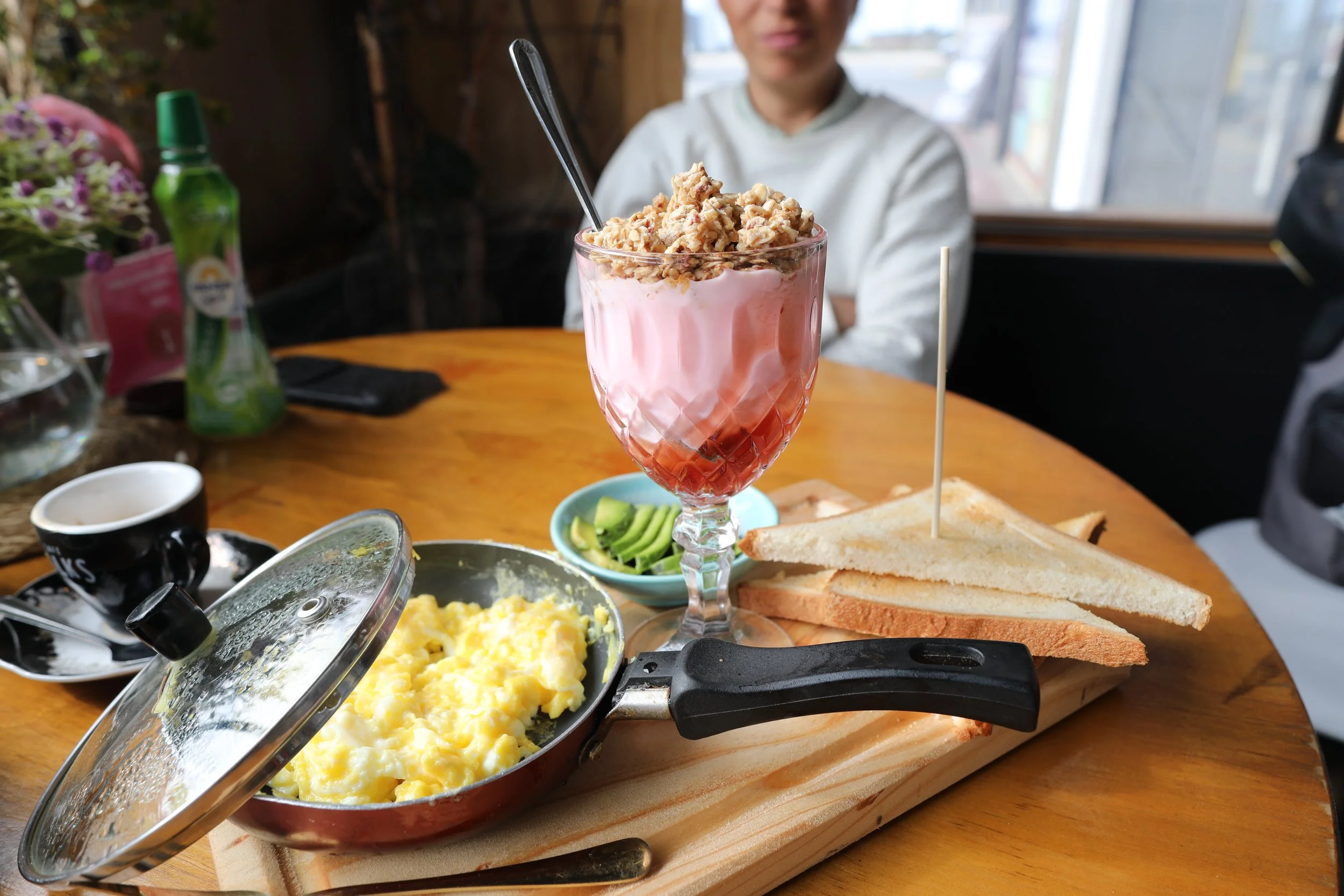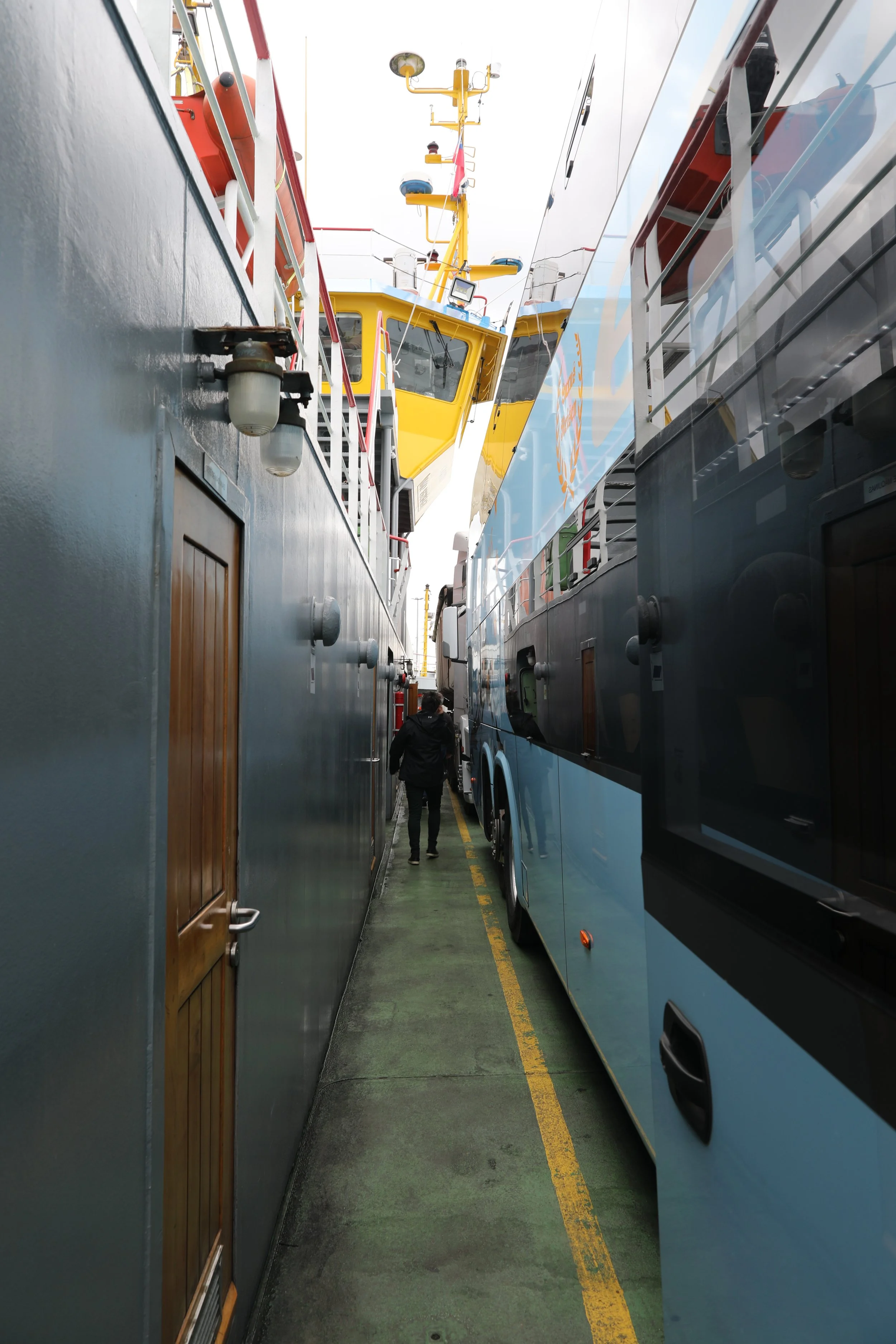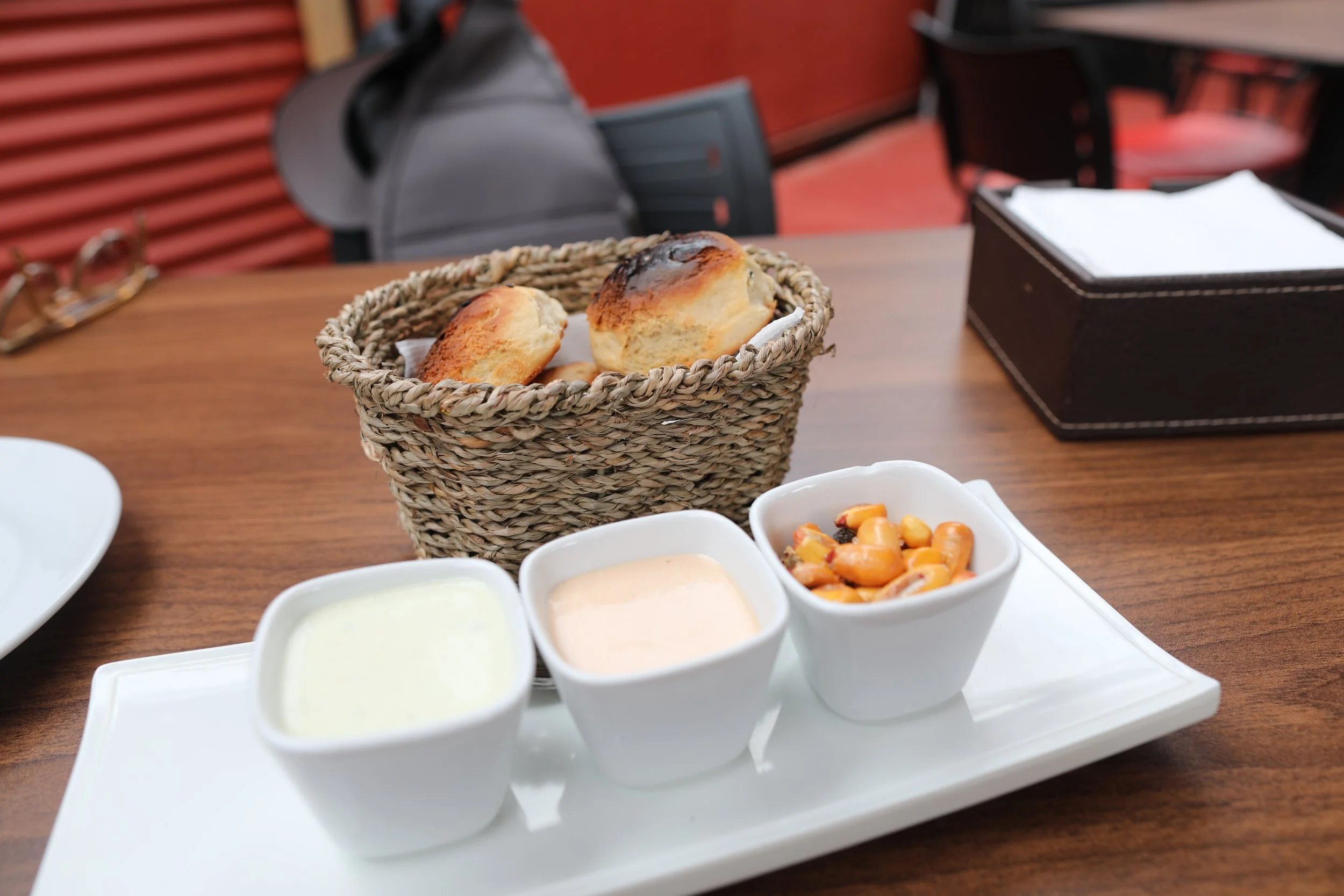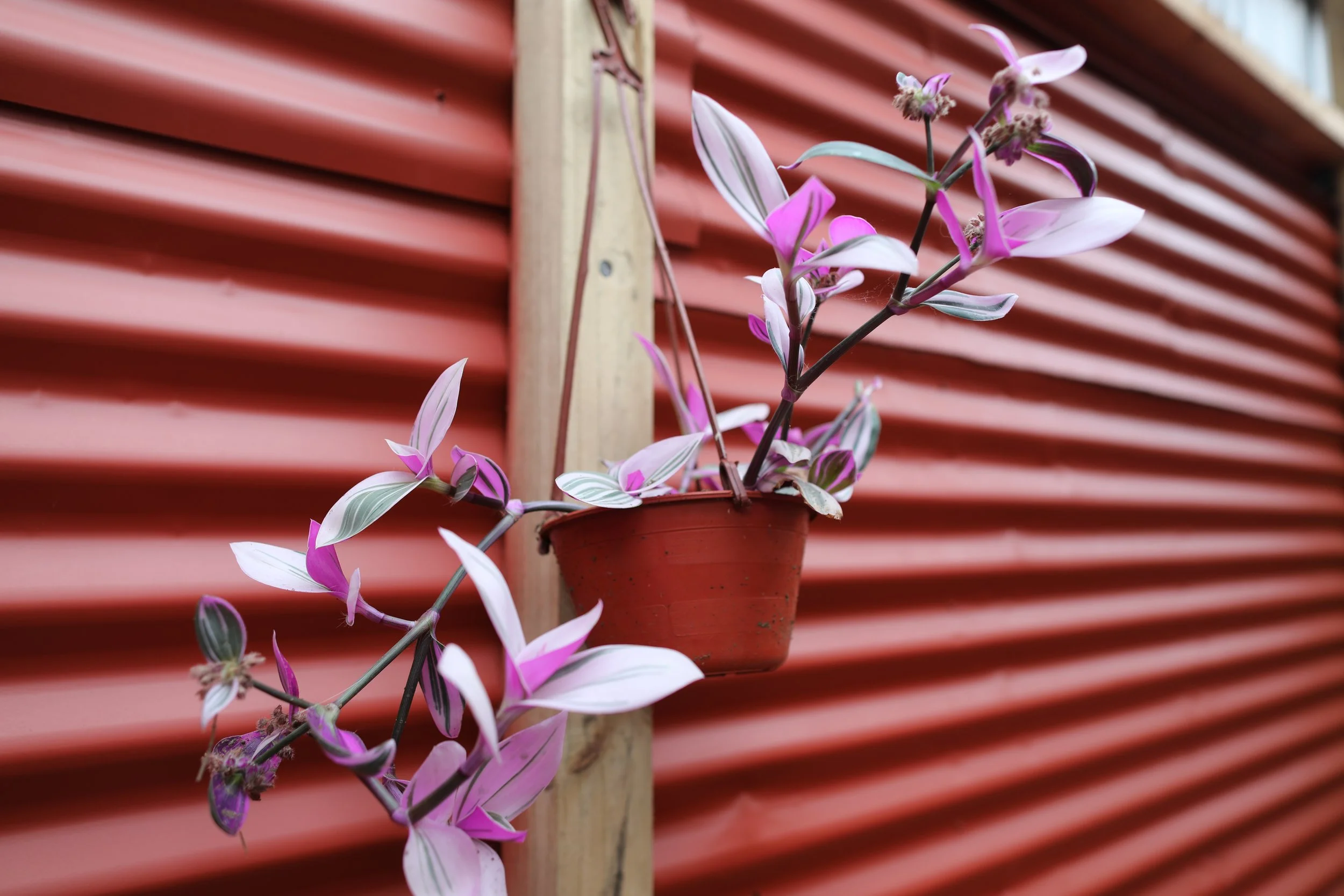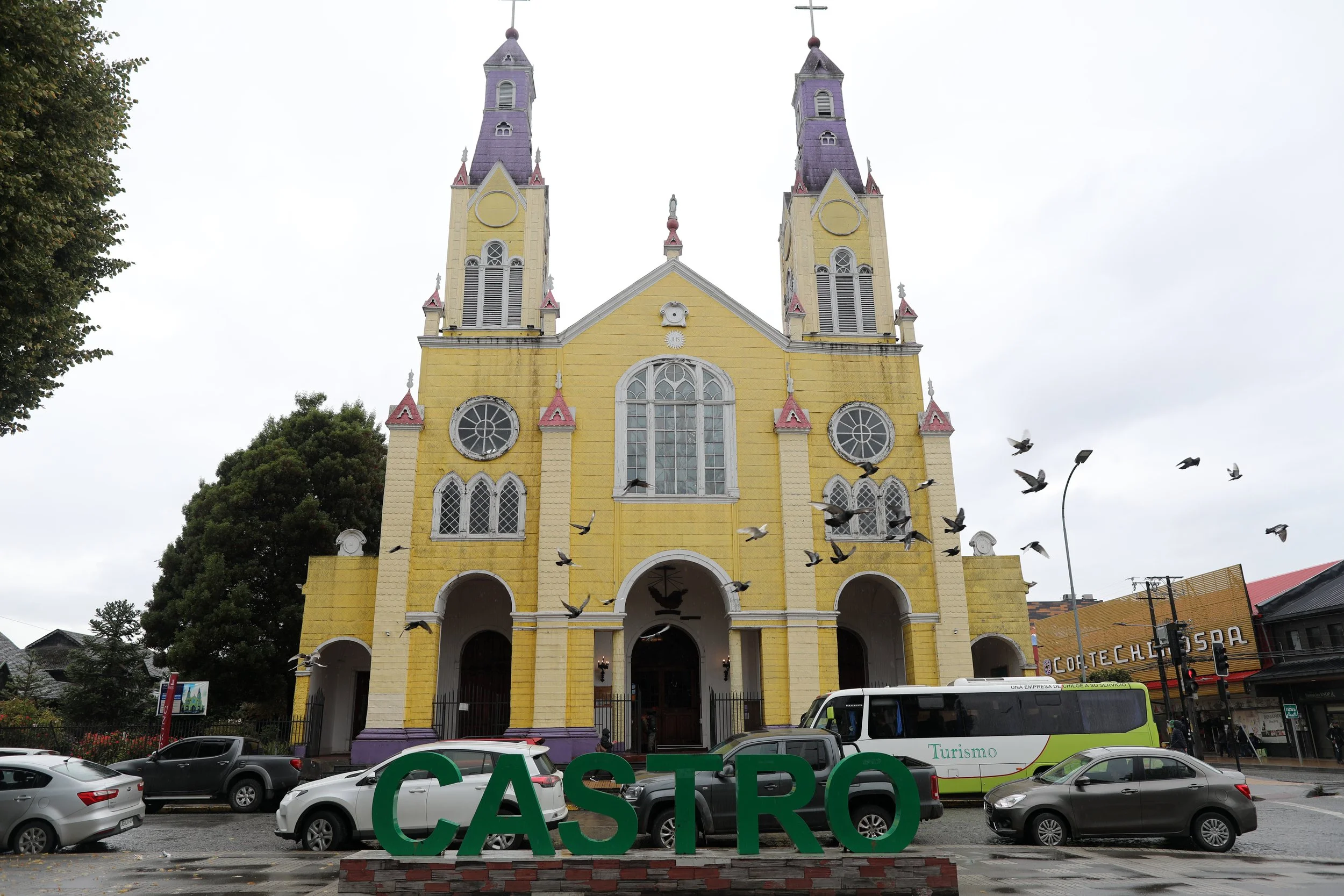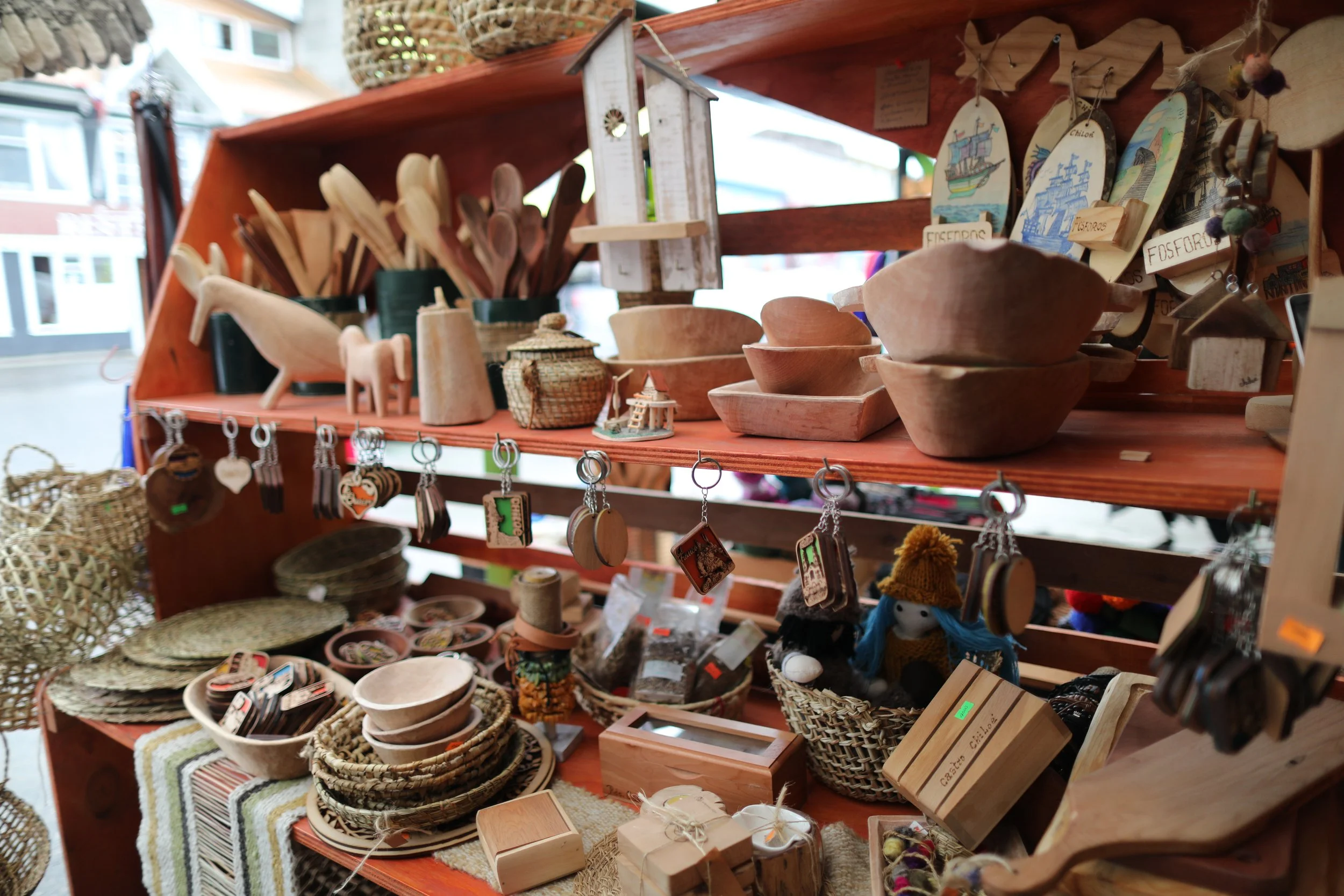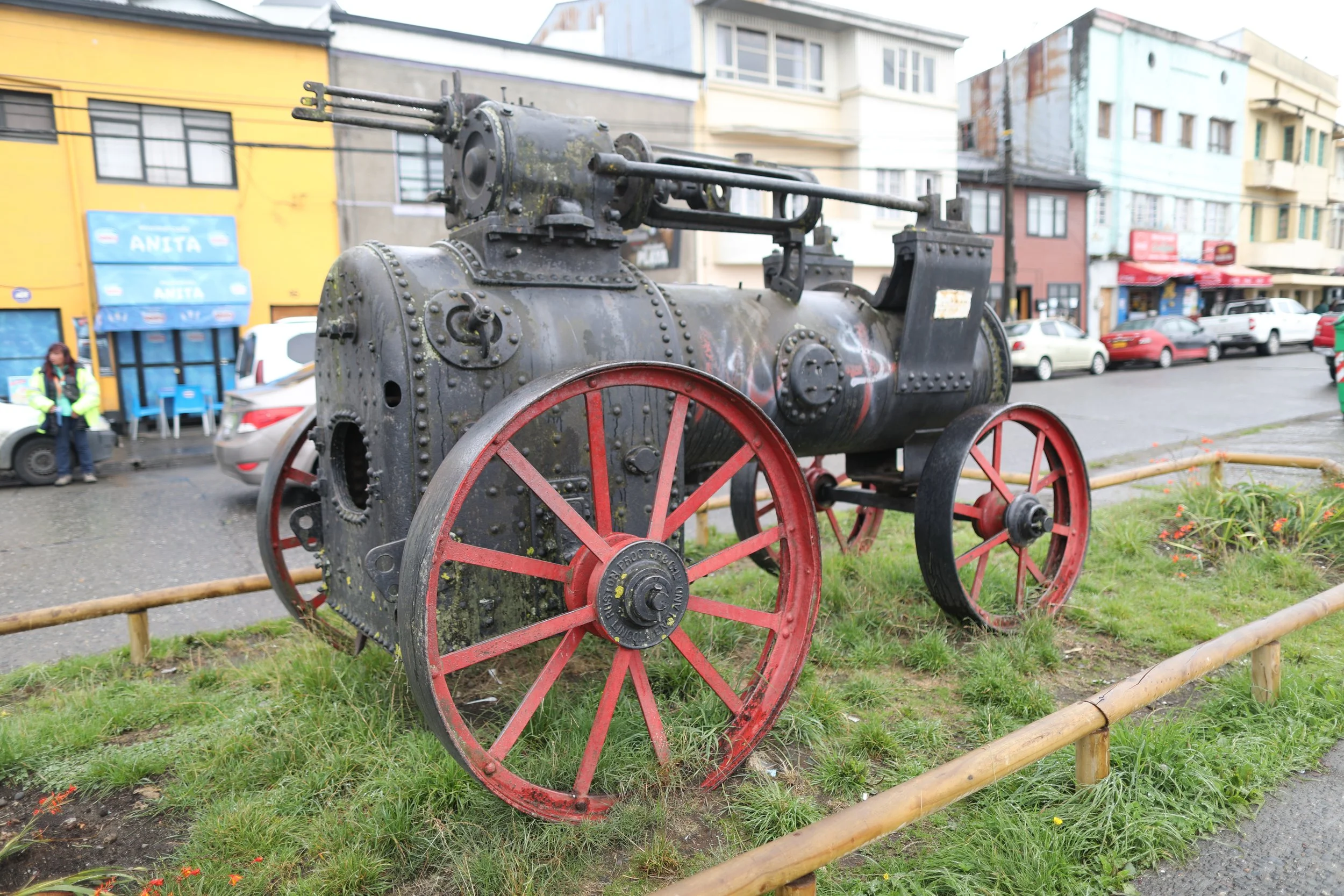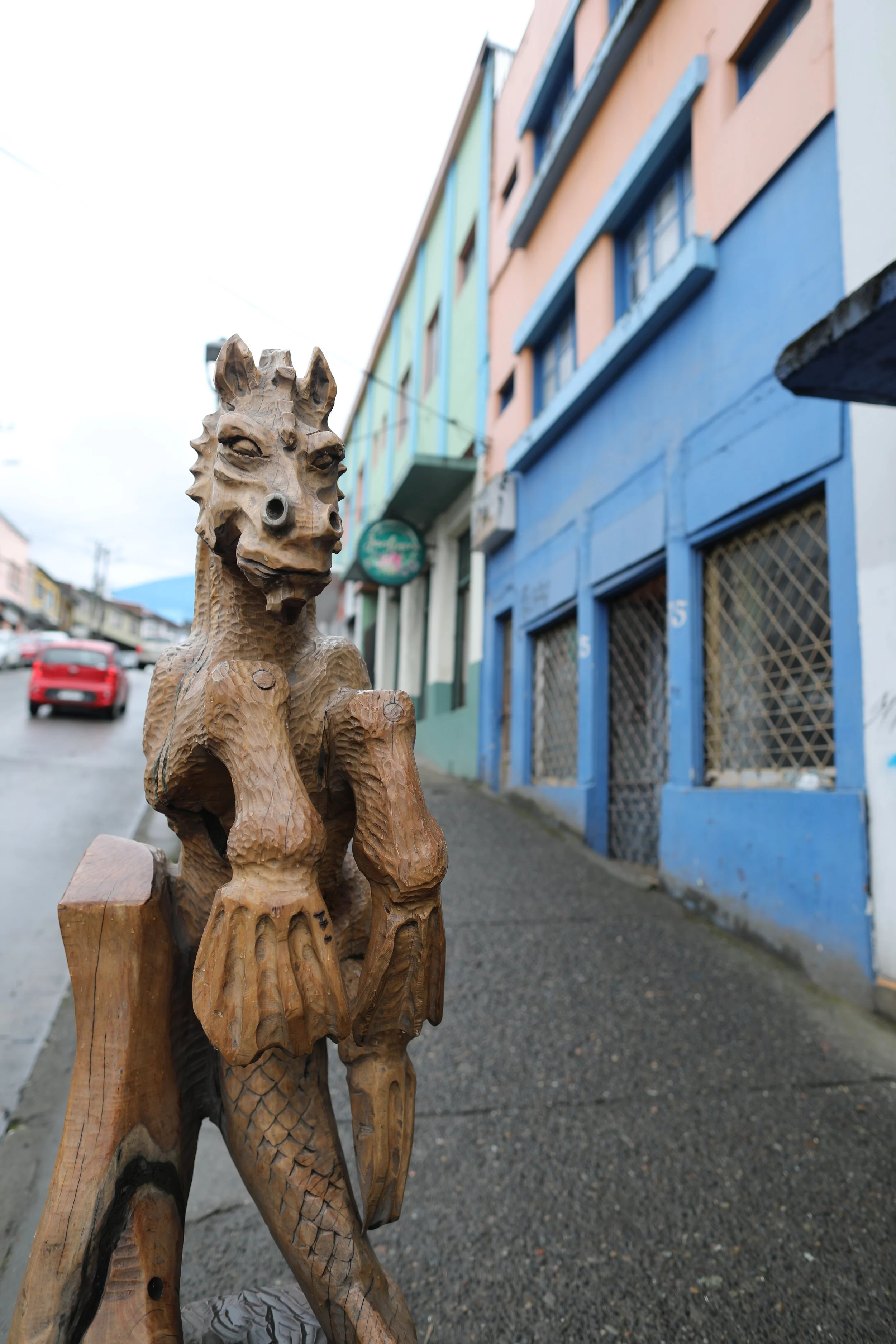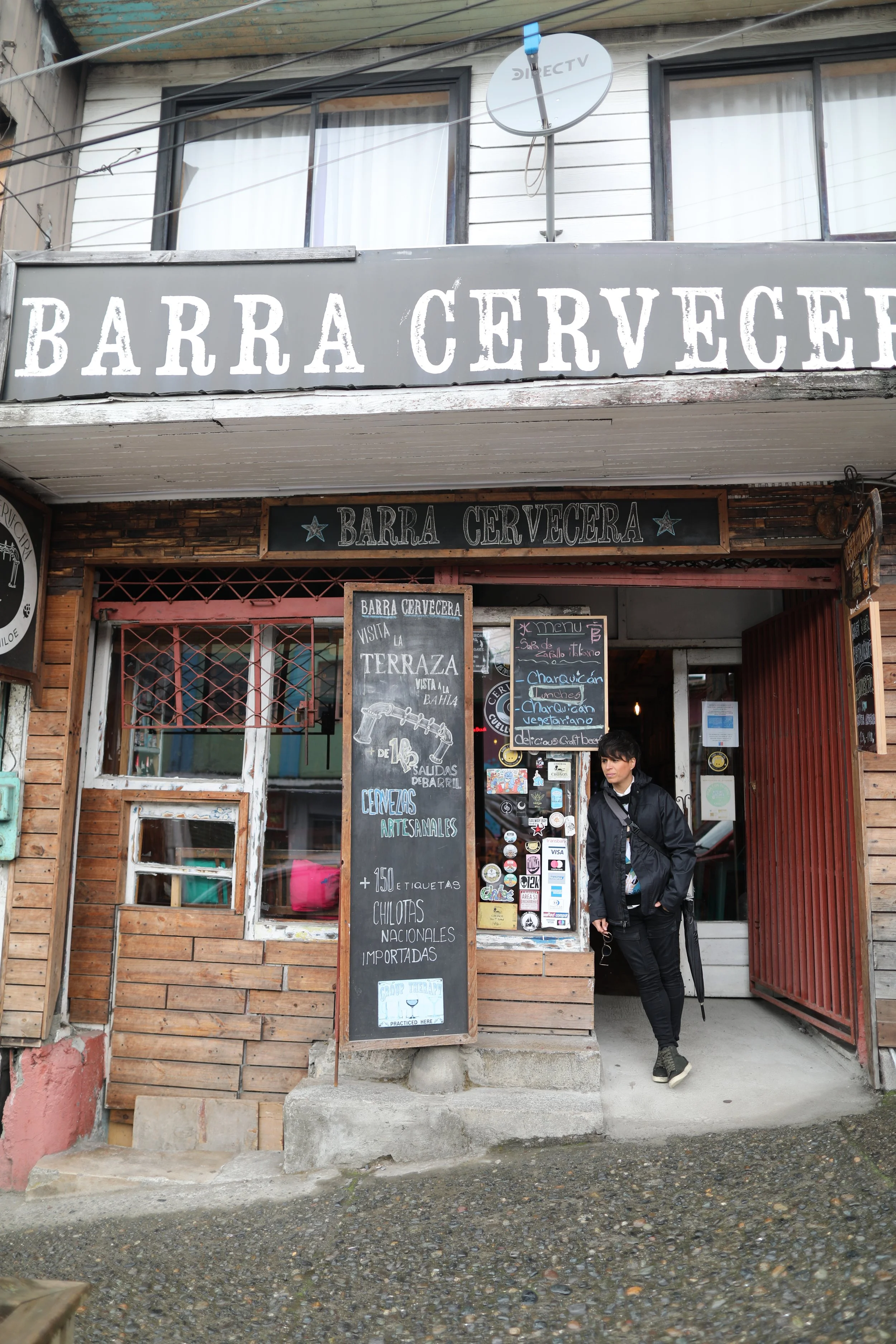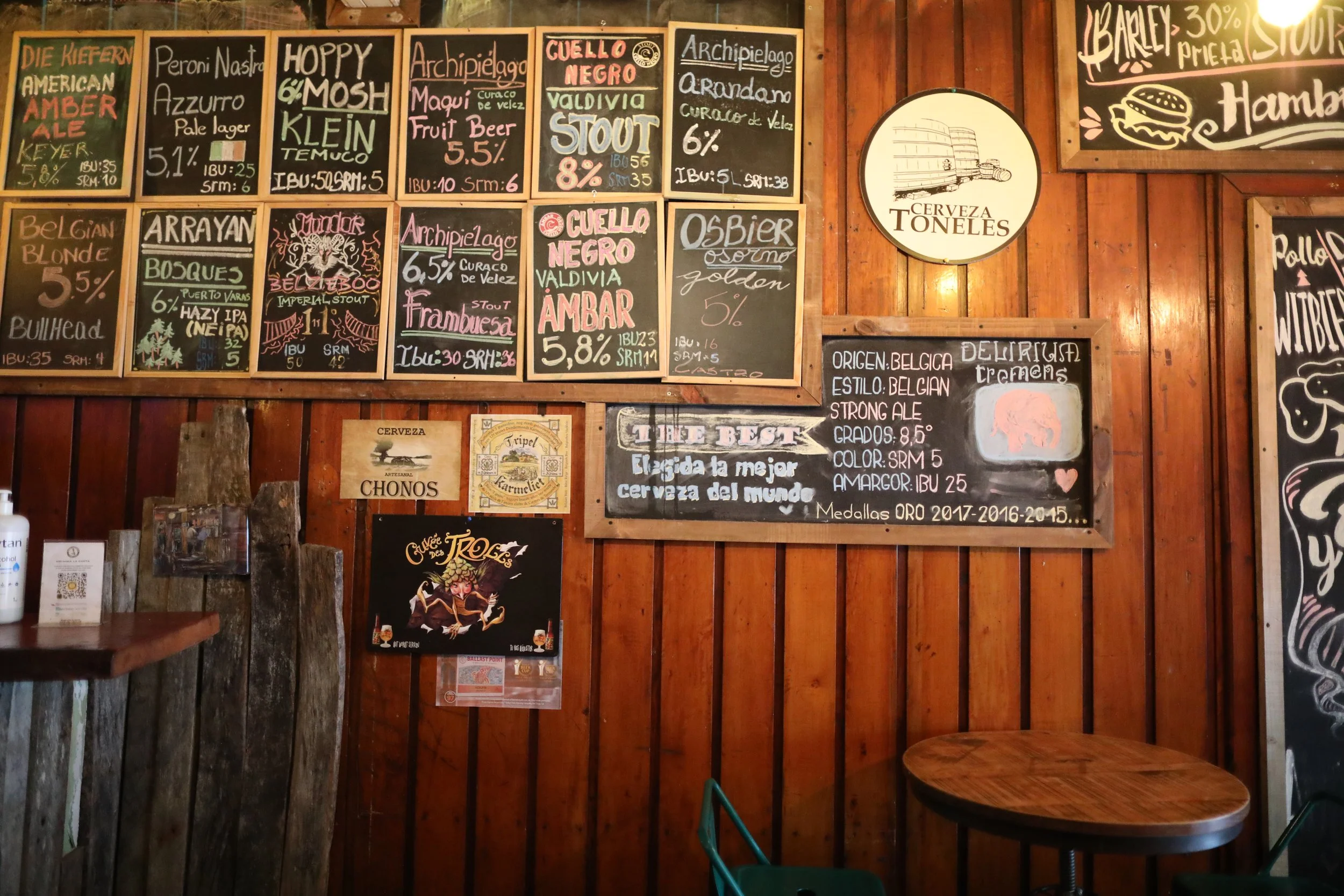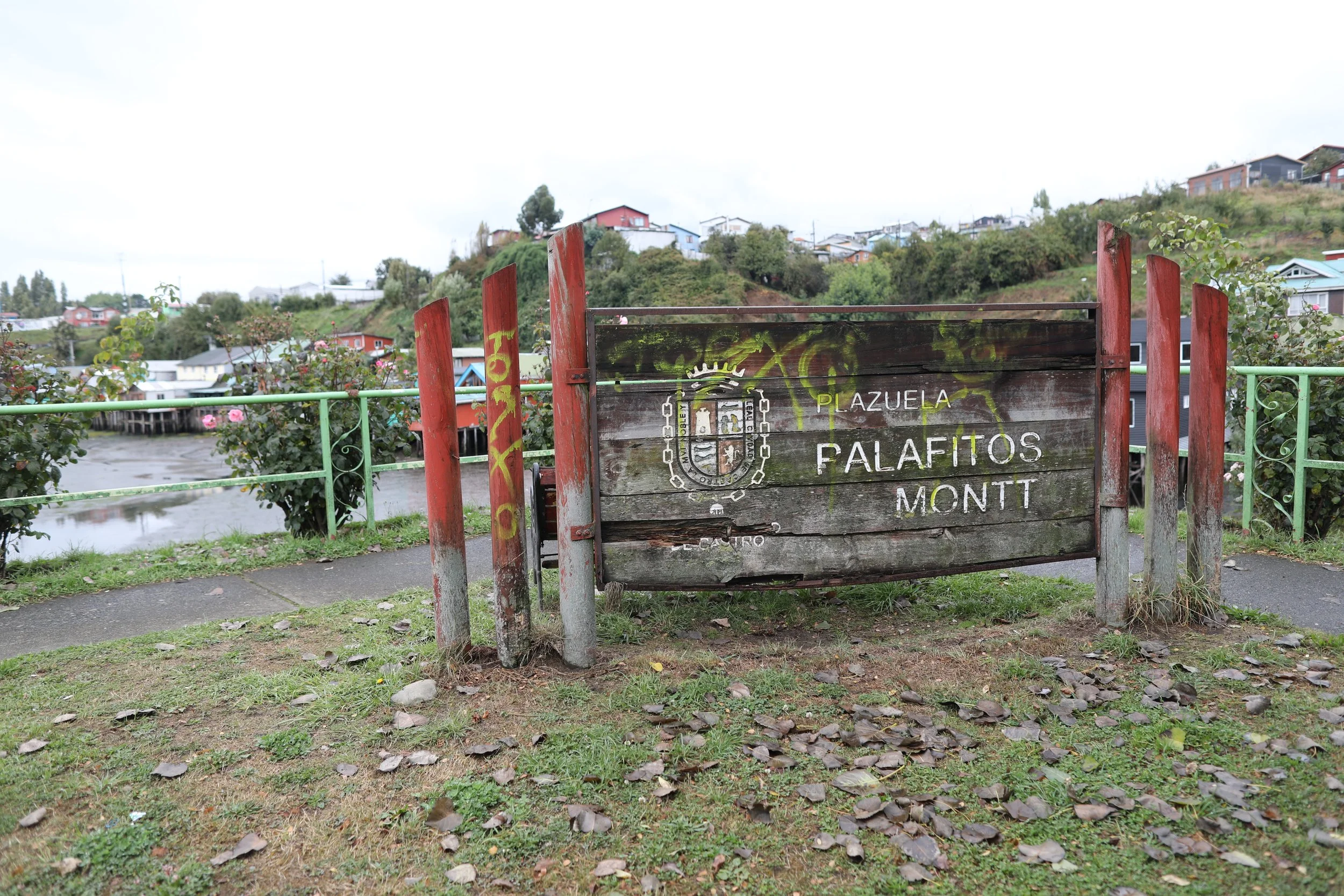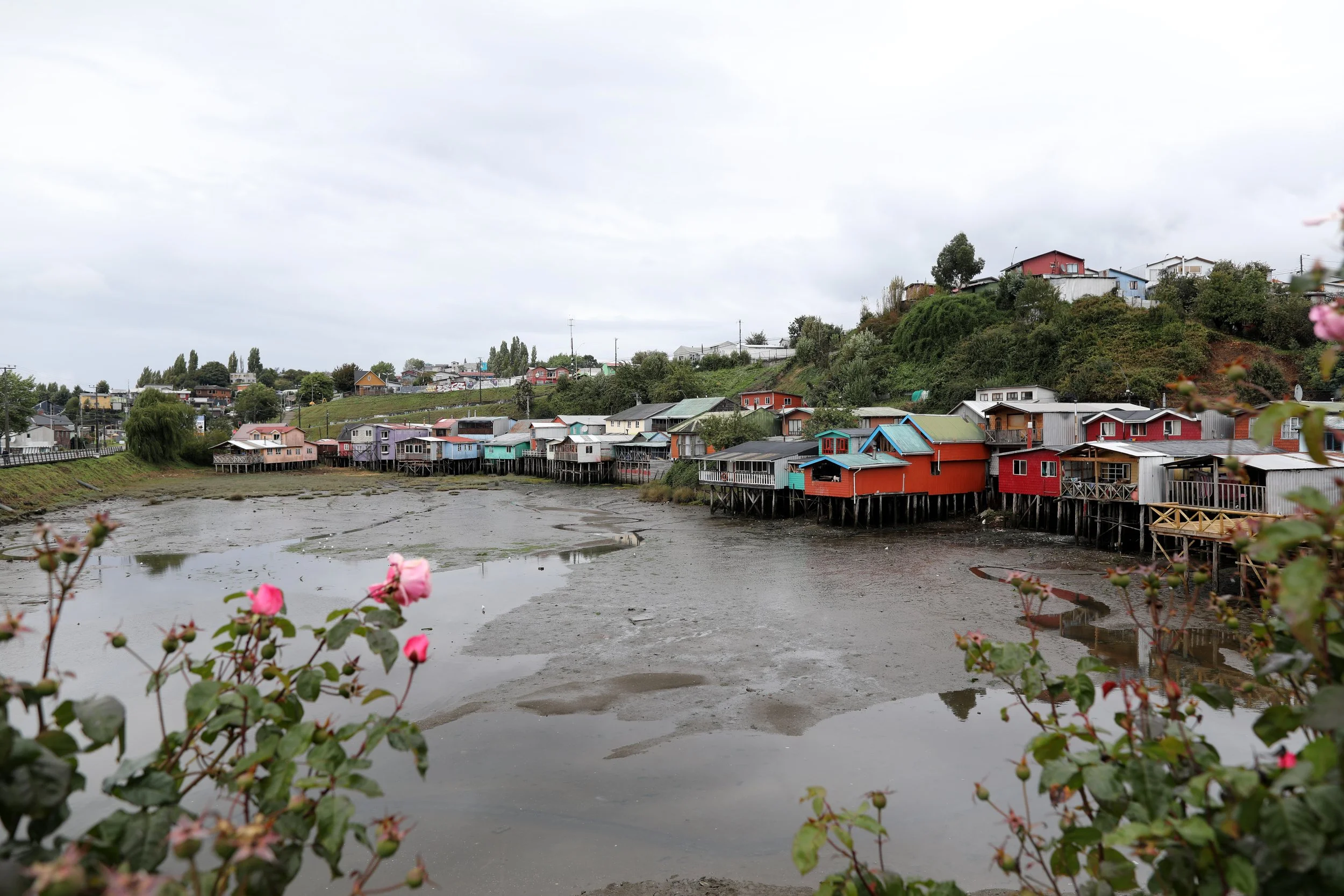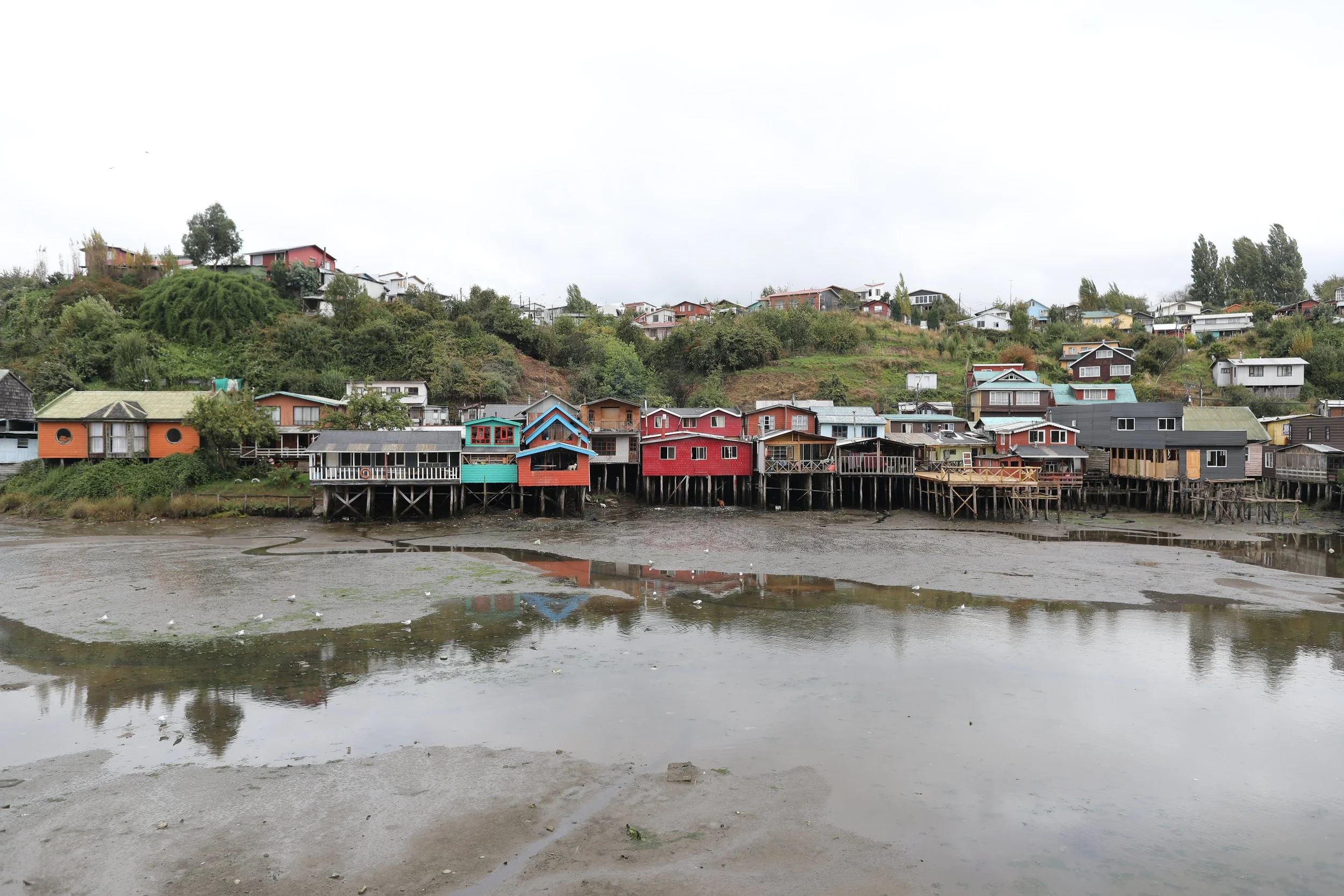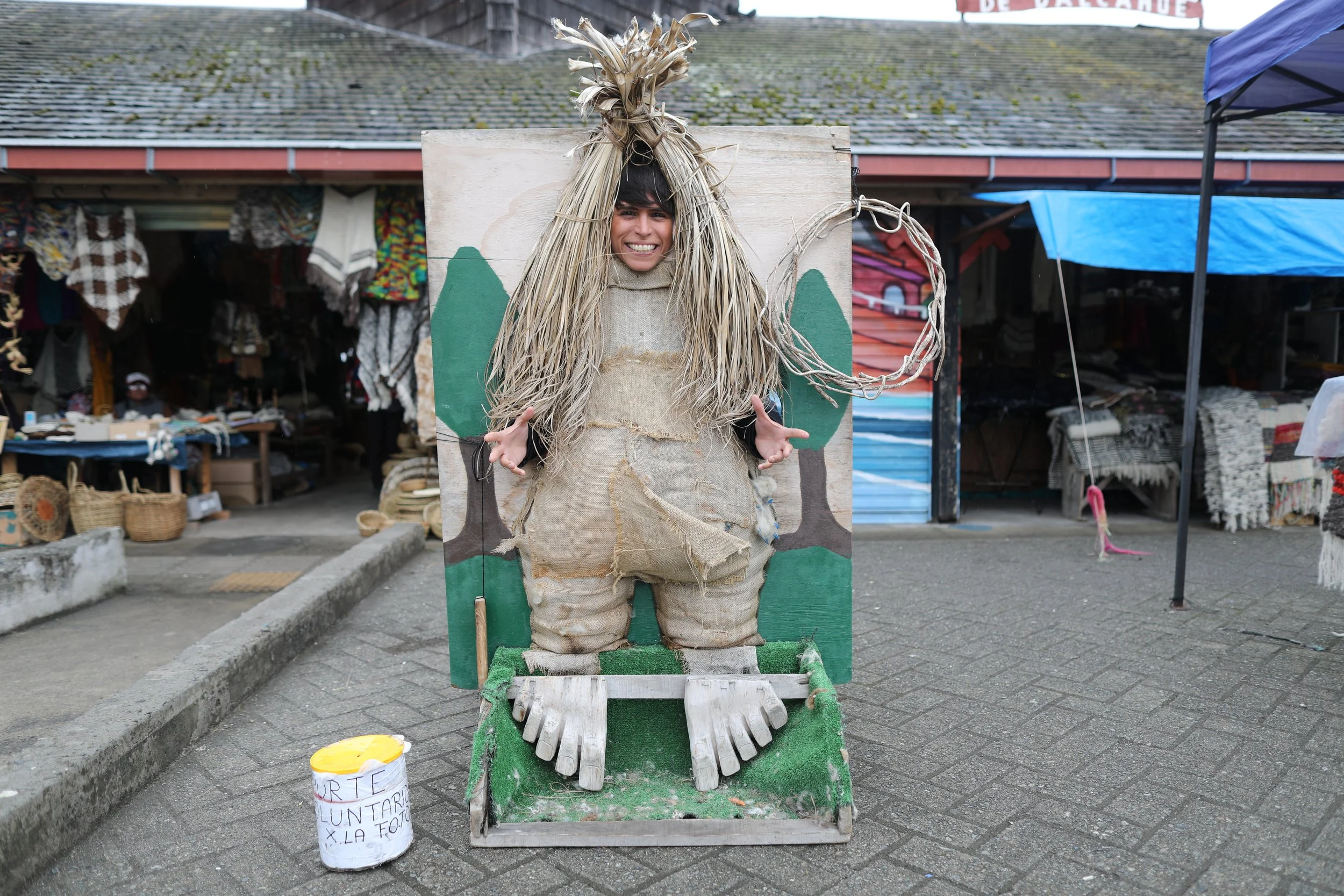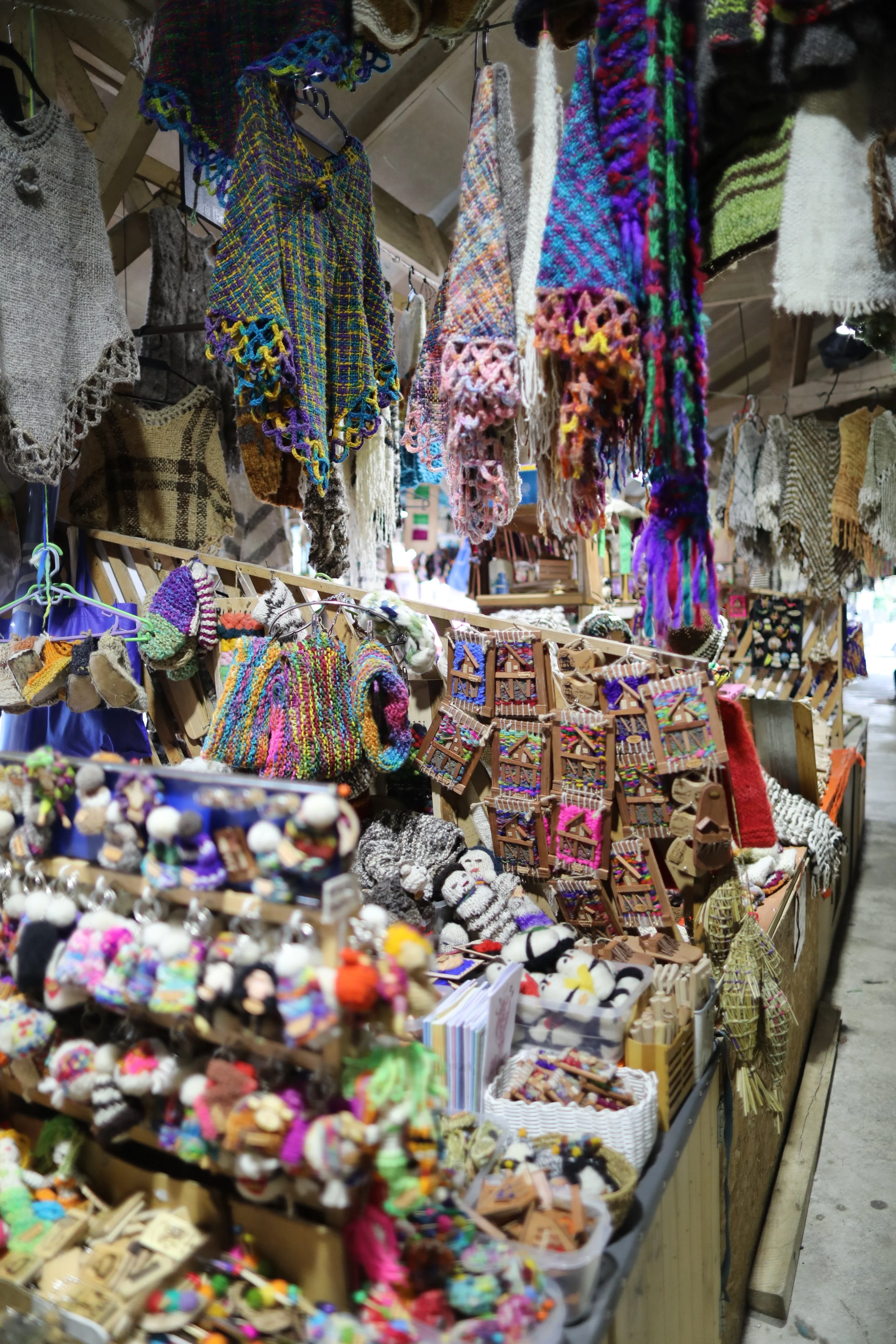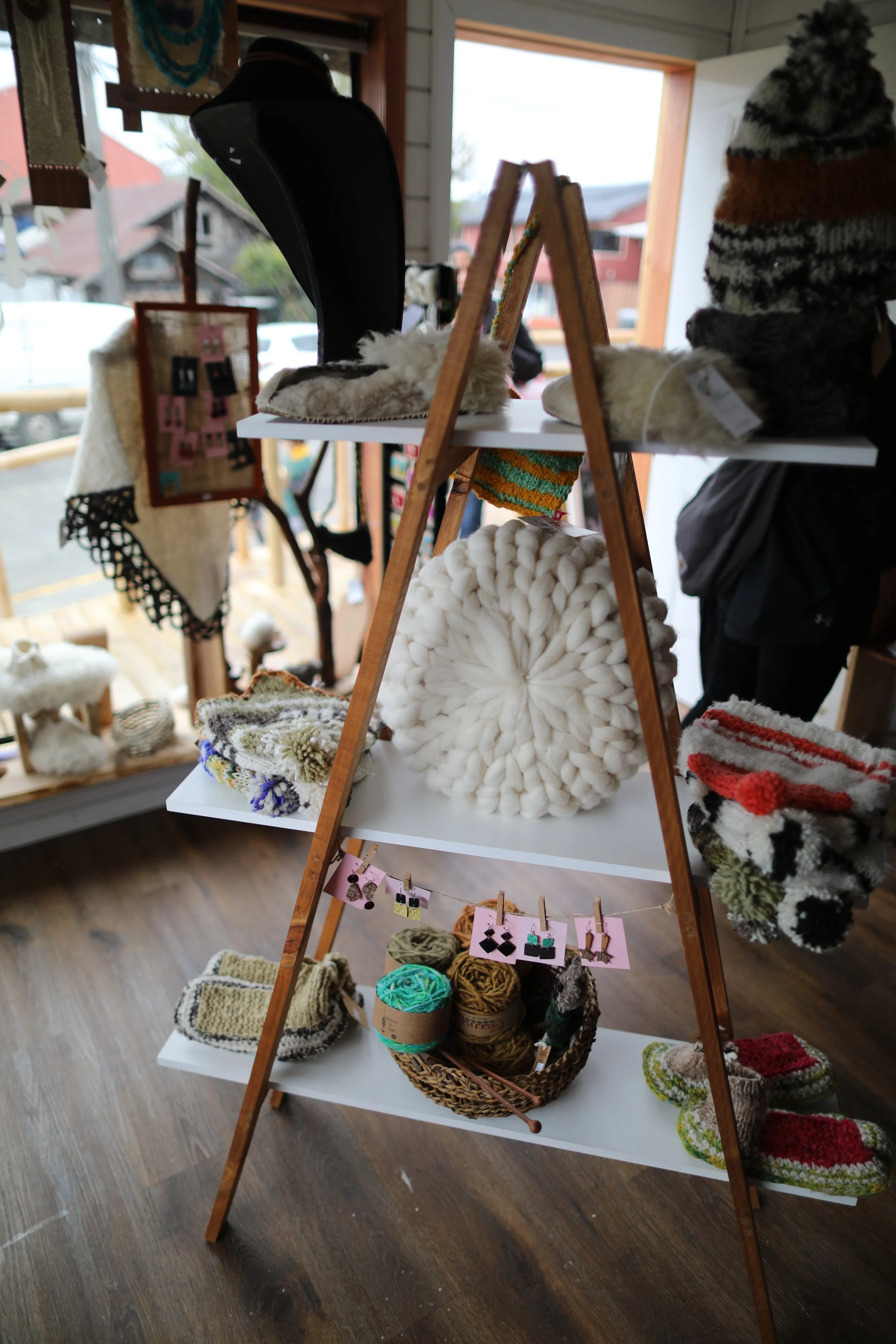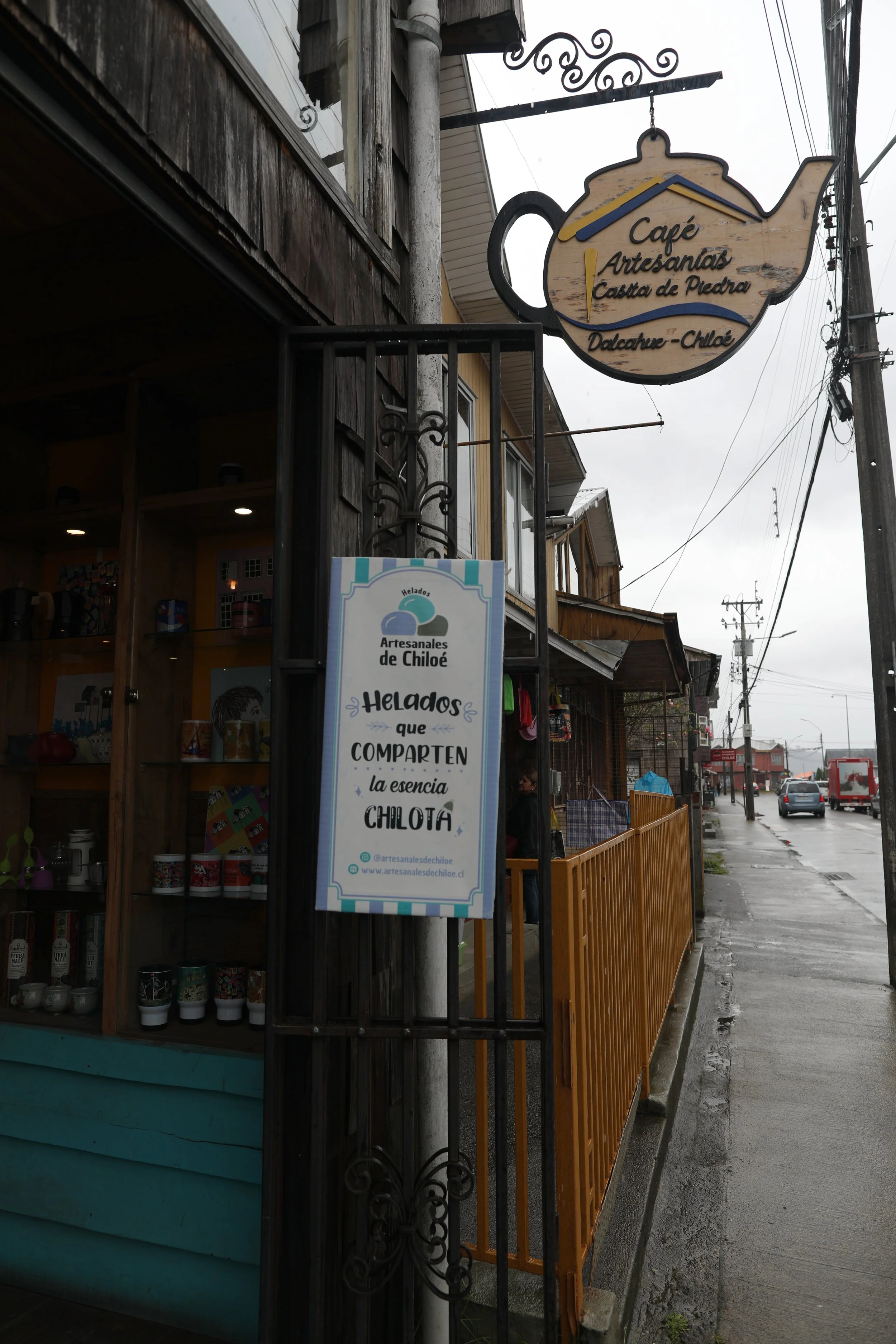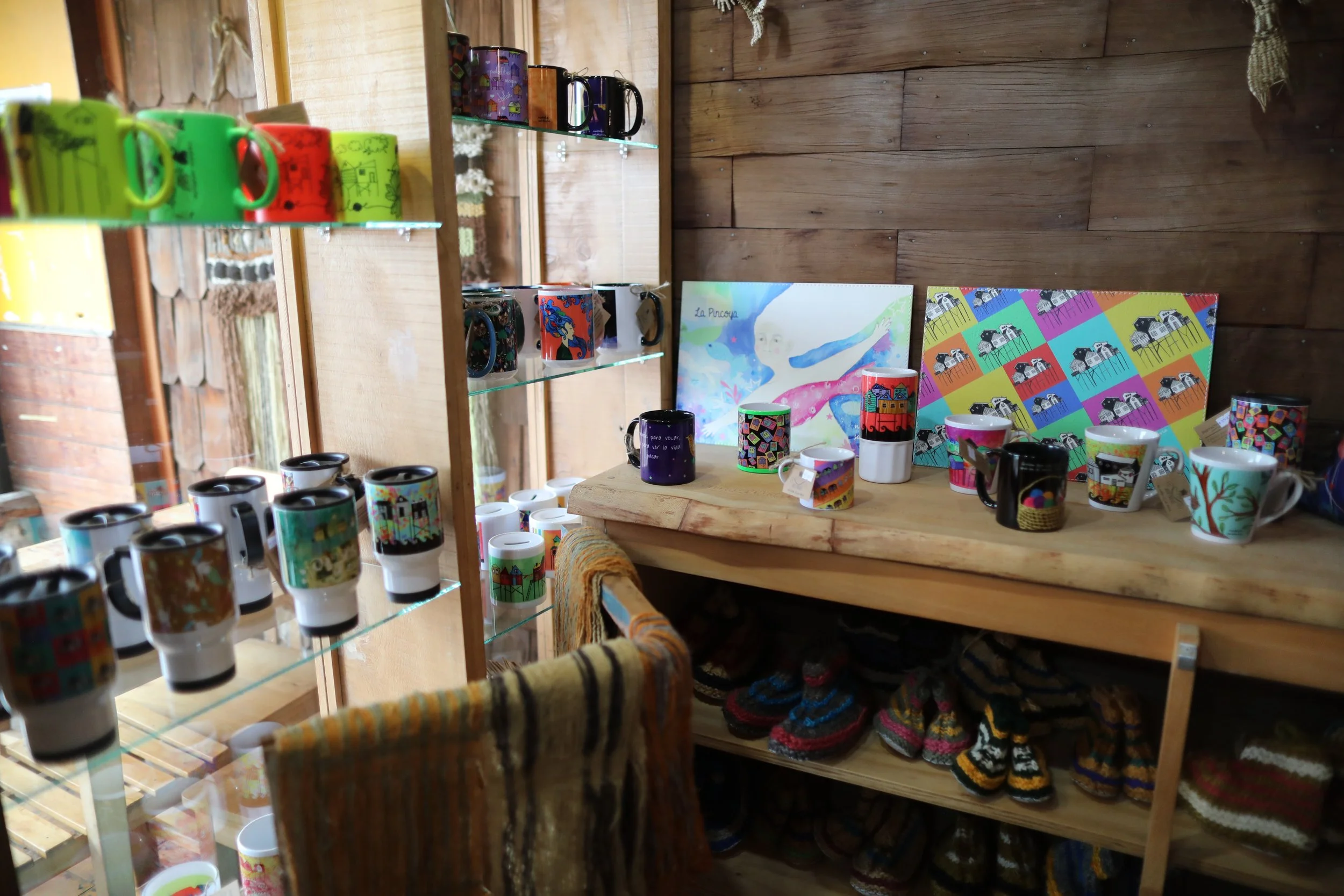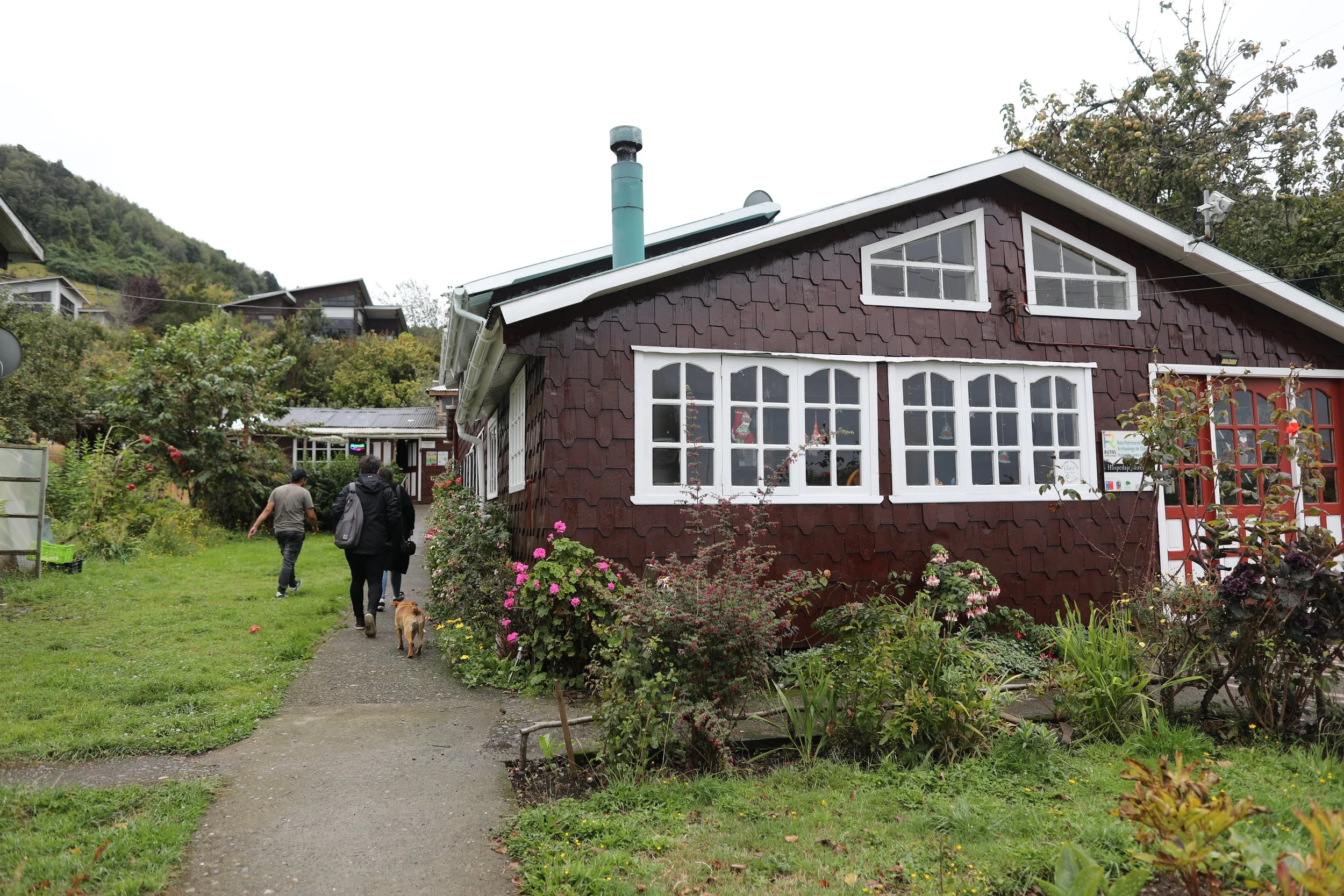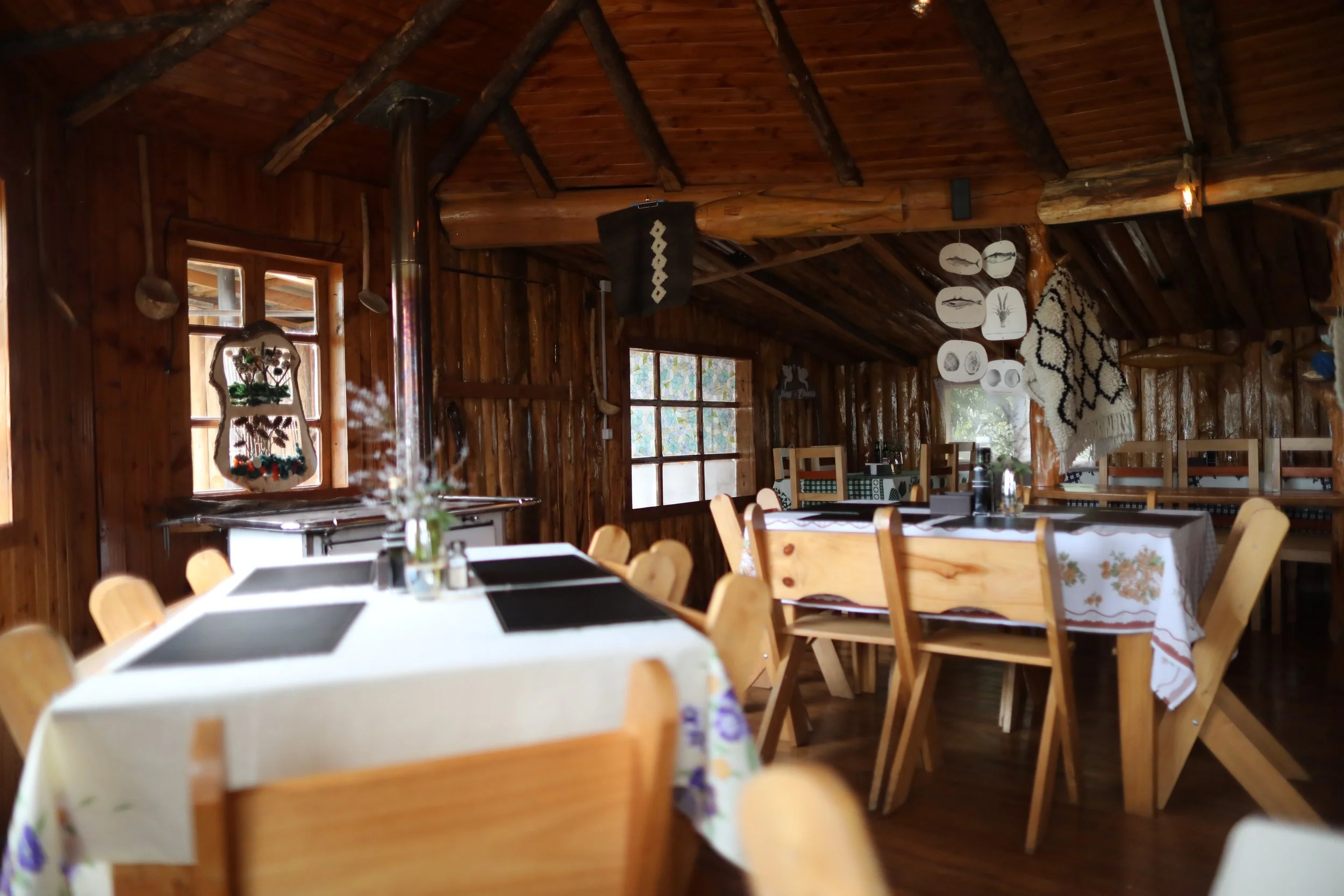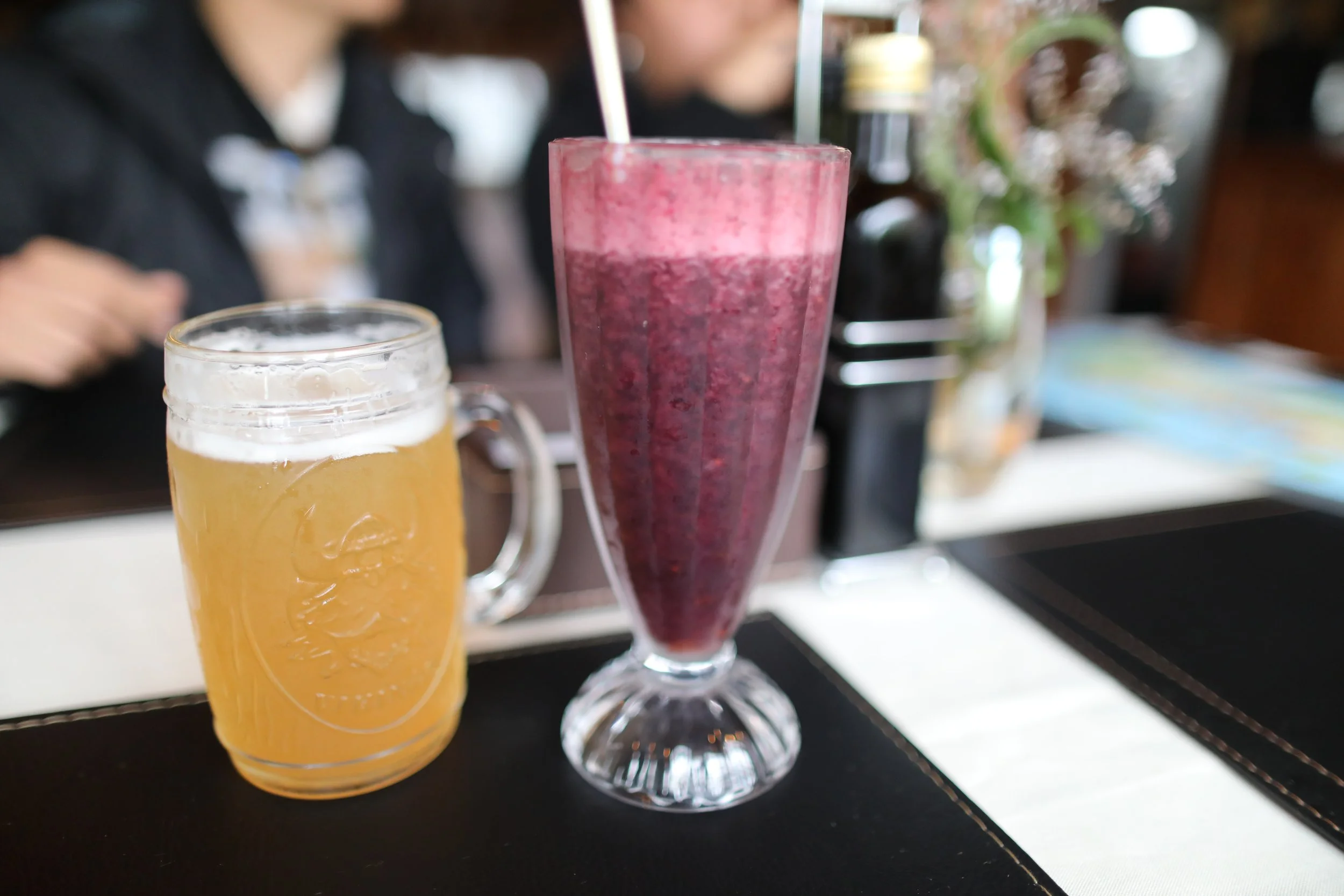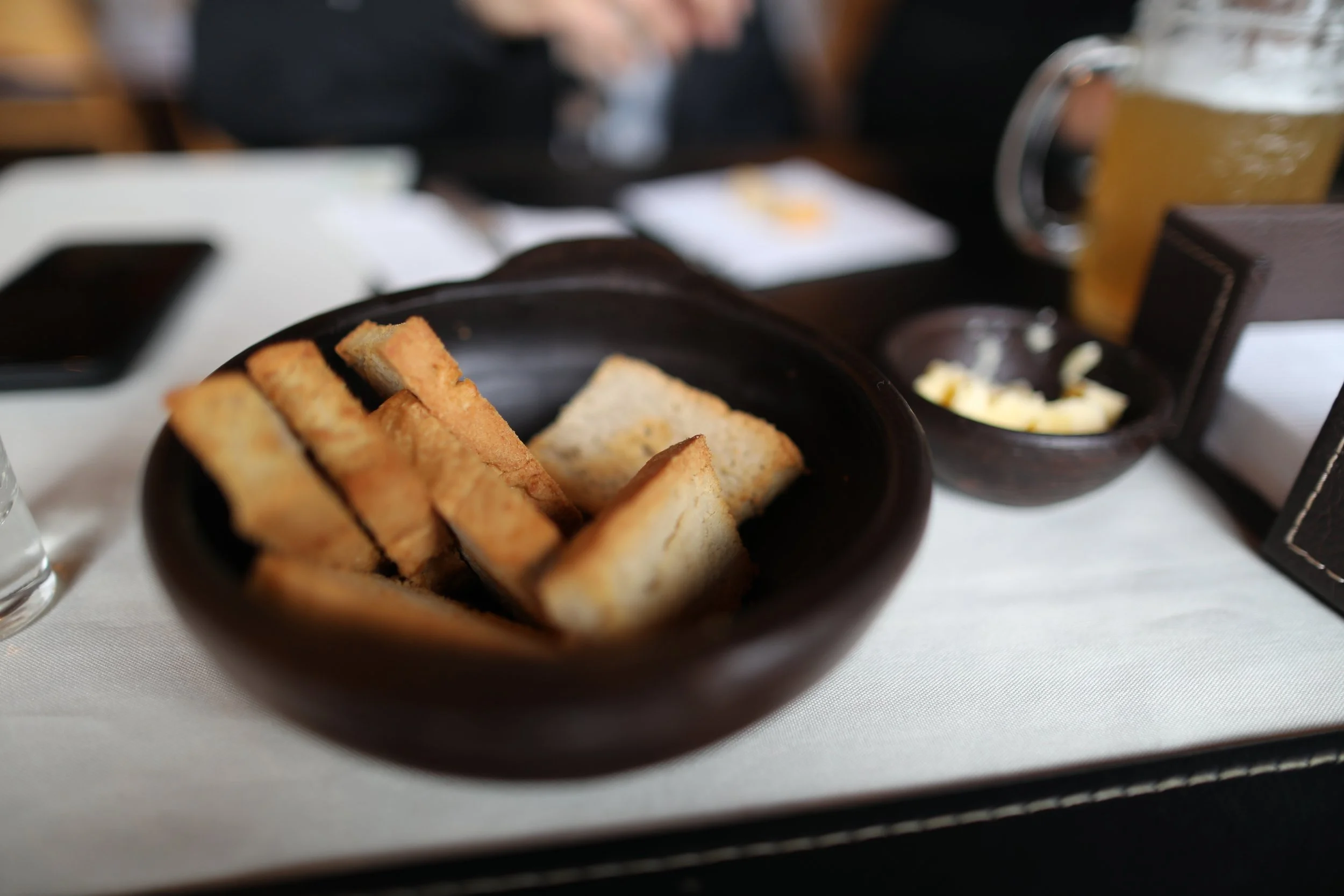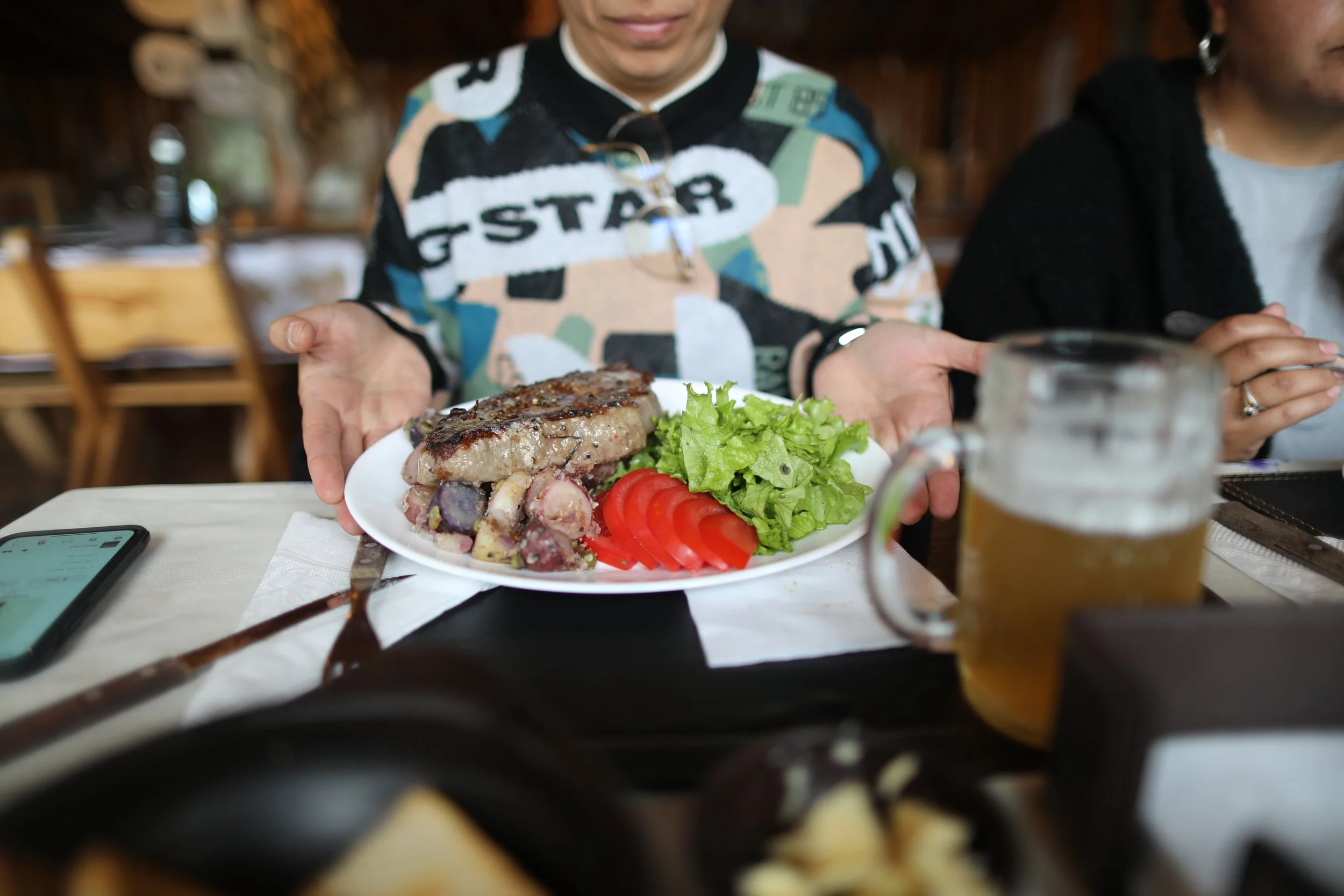Chiloé Island: Land of Myth & Sea
Best things to do in Chiloé: discover the island’s unmistakable charm & mythic mystery with this travel guide.
Land of mystery and superstition, Chiloé — also called the Greater Island of Chiloé — is the largest island in the Chiloé Archipelago, located off Chile’s west coast in the Pacific Ocean. It was our final stop on a two-week trip around the country and surprised us with its rich cultural and natural heritage: colorful stilt houses, lively handicraft markets and UNESCO-listed wooden churches.
Consistently covered in a cool grey mist, Chiloé feels strangely unique, mythical even. It’s a place filled with rich folklore, mythology and a quiet, steady magic featuring a vibrant cast of mythical creatures and supernatural beings. But landing in Chiloé was no small feat.
Making the most of Chile’s wildly varied landscapes demanded far more than a standard vacation — it meant eight flights, endless bus and taxi transfers and even a ferry ride, all stitched together with careful planning and a taste for adventure.
That’s how we landed in Castro on Chiloé Island.
But first, we kicked off nearly two weeks of nonstop exploration across Chile’s highlights, in Santiago — a city where rooftop glasses of Chilean wine meet inventive plates (don't miss Boragó) and colorful murals and cutting‑edge galleries pulse through the streets.
From there we headed to San Pedro de Atacama — a moonscape often called the driest place on Earth. From our base, we fanned out on day trips: Laguna Chaxa where flocks of pink flamingos drifted across glassy salt flats; Piedras Rojas, a surreal stretch of rust-colored rock against cobalt skies; and the high Altiplanic lagoons, vivid turquoise mirrors rimmed with salt and snow-dusted peaks. We climbed into the Andes at dawn to watch plumes of steam and boiling vents at El Tatio, then wandered the sculpted salt valleys of Valle de la Luna where wind and time have gently carved otherworldly shapes. At night, we admired an unpolluted abyss of stars — a cathedral of constellations so bright it felt like the universe had been turned up to full volume.
Heading south, we touched down in Punta Arenas—the last stop before Antarctica—and boarded a bus that threaded us into the wild heart of Chilean Patagonia: Torres del Paine. There, the landscape (and weather) assaulted the senses with icy waterfalls that bit the air, hulking glaciers carved in slow motion and icebergs adrift like frozen ships.
We closed the trip in Castro on Chiloé Island, a place wrapped in legend and surrounded on all sides by the restless sea.
Unmissable Adventures on Chiloé Island
Get To / Chiloé Island from Puerto Montt (via Torres del Paine)
Eat / at Restaurante Al Estilo Chef Merce
Explore / Downtown Castro
Discover / the famed palafitos
Shop / Dalcahue's markets
Lunch / at Hospedaje Mirella Restaurant in Tenaún
Float / to Isla de las Almas Navegantes
Unmissable Adventures on Chiloé Island
Exploring Chiloé Island feels like stepping into a misty fable of weathered wooden churches, vibrant palafitos and slow-paced island life where folklore and seafood soups shape daily rhythm. Wind-swept coasts, rolling pastures and friendly locals make every detour—by ferry or gravel road—an invitation to uncover hidden traditions and wild landscapes.
Get to Chiloé Island From Puerto Montt (Via Torres del Paine)
Though a bit of a trek to reach and not everyone’s first pick, Chiloé Island emerges as one of southern Chile’s most delightful surprises. Quiet, cool and strikingly untouched, the island is a hidden gem tucked into the Los Lagos Region, making it a perfect final stop on a Chilean itinerary.
Located off Chile’s southern coast, Chiloé is reachable from Puerto Montt after a journey that truly stresses the remoteness and reward of visiting this place. Many travelers arrive from Torres del Paine, making a long bus ride to Punta Arenas to catch a flight north to Puerto Montt. After a night in Puerto Montt to reset from travel, the trip continues by bus: a scenic three-and-a-half-hour drive that leads onto the island itself. The route prepares visitors for Chiloé’s distinctive atmosphere—an archipelago of small towns, colorful stilt houses, ancient churches and windswept shores that feel a world away from Chile’s more frequented destinations.
Travel / This portion of travel requires several legs that include taxi’s, buses, planes and a ferry. You’ll also likely need to stay the night in Puerto Montt as this journey will take place over two days.
Torres del Paine 》Puerto Natales Bus Terminal (1.5-3 hours via bus) 》Punta Arenas Bus Terminal (3.5-4 hours via bus) $10-16 USD & $10-20 USD
Punta Arenas Bus Terminal 》Punta Arenas Airport (20-30 minutes via taxi) $10-20 USD
Punta Arenas Airport 》Puerto Montt Airport (2 hours, 15 minutes via plane) $175 USD
Puerto Montt Airport 》Puerto Montt Bus Terminal (30-40 minutes via taxi) $10-20 USD
Puerto Montt Bus Terminal 》Chiloé Island Bus Terminal in Castro (3.5 hours via bus & ferry) $11 USD
On the way out of Puerto Montt, start your morning at Panichini Cafe Boutique, a charming spot near the bus station that’s perfect for fueling up before a trip. A chai latte with an extra shot of espresso pairs nicely with the local desayuno ejecutivo—think a yogurt parfait alongside bacon, eggs and toast—to set you up for the day.
Terminal Buses Pto. Montt sits about a 15-minute walk along the harbor, a pleasant option if you’re interested in a seaside stroll. If you prefer to save your legs for exploring, a short taxi will get you there quickly. Purchase tickets at the terminal window for a departure to Chiloé and board the double-decker coach. The upper level is super spacious and comfortable, helping the roughly three-hour crossing fly by while you watch the landscape change from mainland to island.
Near the end of the ride the landscape shifts and anticipation grows. The bus rolls into Pargua, a small village in the Calbuco commune perched on the northeast edge of the Chacao Channel. Route 5 skirts the town and a short ferry crossing connects Pargua with Chacao at the northern tip of Chiloé Island.
Once aboard the ferry, passengers can hop off for a quick break—suddenly the mainland’s rush disappears and you’re left with salty air and gentle coastal rhythms. And with just enough space to squeeze between towering vehicles stowed on the ferry, climb to the top deck for the view.
Even under a grey, overcast sky, the fresh sea air refreshes — anticipation builds as the island approaches. Half an hour later, the boat eases into the dock, its ropes creaking as passengers stir.
On land, the dock hums with activity — locals greet one another, vendors arrang goods and pockets of laughter spill into the breeze.
Eat at Restaurante Al Estilo Chef Merce
Arriving at the town’s bus station, the first thing to do is sample the local snacks — sugar-coated peanuts sold by street vendors are a sweet, crunchy welcome. From there it’s a short ride into town; an Uber will take you straight to lunch at Restaurante Al Estilo Chef Marce, a Peruvian spot celebrated for its commitment to freshness, top-quality ingredients and bold, balanced flavors. It’s the perfect first stop to dive into the region’s culinary scene, Peruvian style.
A covered patio bathed in dappled light and framed by abundant greenery sets a relaxed, inviting tone. After a long day of travel, the menu—rich with local specialties—can feel overwhelming, so it’s wise to start by asking the staff for a few house favorites.
A basket of warm bread arrives first, accompanied by an assortment of side dishes — dipping sauces and toasted corn nuts that prove unexpectedly essential. For drinks, the choice might fall upon a Peruvian classic: chicha morada. Translating to "purple chicha," this sweet, nonalcoholic beverage hails from the Andean regions of Perú and is made from purple corn simmered with pineapple peels, quince, cinnamon and cloves.
The mains showcase both bold flavors and familiar comfort. The fried rice arrives packed with mixed proteins — tender steak, juicy chicken and plump shrimp — each bite offering a satisfying blend of textures. The camarones al pilpil is a standout: shrimp bathed in a white wine and butter sauce, served with buttery potatoes that soak up every savory drop. Fresh, flavorful and unfailingly comforting, these dishes feel just right.
To finish, request a local aperitif from the warm staff—this regional specialty will prove delightfully flavorful and finish off the meal with a kick.
Lunch in town provides a glimpse into downtown Castro’s cool, grungy vibe, where vibrant street art colors the sidewalks and independent shops and cafes hum with local energy.
From there, catch an Uber for the 45-minute drive southeast to Rilan and the Hotel & Cava Estancia Rilan. The route follows and then skirts Estero de Castro, a wide tidal bay that opens onto the smaller islands of the Chiloé Archipelago. Expect winding roads and changing coastal views—salt flats, small inlets and glimpses of fishing boats—before arriving at the hotel, which sits among rolling pastures and native vegetation. The location makes the perfect base for exploring regional highlights: chapel-studded villages, artisan markets, and boat trips to the archipelago’s islets.
Stay / More on Hotel & Cava Estancia Rilan soon.
Explore Downtown Castro
To explore Castro and all it has to offer, consider teaming up with a local guide for a richer, more eclectic experience. We arranged a day with Lili, a local girl who knows the island’s rhythms and favorite corners, for $100 USD. She met us at the hotel at 10:30 a.m. and we made the 40-minute drive from Rilan into town, the landscape shifting from quiet coastal lowlands to the color-drenched streets of Castro.
Our first stop was the Investigations Police of Chile (PDI), a necessary detour to resolve a paperwork mix up that had followed us from Torres del Paine. Our hotel had requested our immigration documents to avoid a 19% tax on the bill but we were never given such a document upon entering the country.
Tip / Make sure to keep your Chilean Tourist Card in a safe spot. You’ll receive this document upon arrival through any Chilean border control point. The card serves as proof that you’re in the country legally and also allows an exemption for the 19% VAT on hotel accommodation. To qualify for this exemption, you must present a valid passport and your Tourist Card upon check in.
The officer we spoke with at the agency told us this document was not necessary and we should have no problem getting out of the country (but it was still required to avoid the 19% tax on our hotel room). Still, we submitted a request for the document online and with the issue mostly sorted, we were free to focus on the island’s highlights.
From there, the day opened into classic Castro scenes: bright wooden churches with their decorative façades, stilted palafitos lining the waterfront and small markets where artisans sell handcrafted goods and fresh seafood.
In town, Plaza de Armas serves as the heart of Castro and refers to the main square. The plaza is home to a central fountain with benches, a well-kept park, surrounding shops, banks, bars and restaurants, plus local vendors selling handcrafted goods and snacks, as well as the Church of San Francisco.
The Church of San Francisco is the main Catholic church of Chiloé’s capital. Built in 1912, this two-toned canary yellow, early-20th-century church has two lilac steeples and a distinctive wooden interior. The dome above the church’s presbytery stands over 100 feet high with its towers reaching nearly 138 feet. Also known as the Iglesia Apóstol Santiago (St. James Church) and erroneously as the “cathedral,” which is actually found in Ancud, this church is the headquarters of the diocese of the same name. The building was declared a Chilean National Monument in 1979 and a UNESCO World Heritage site in the year 2000 for its unique wooden architecture and blend of European and indigenous culture.
Leaving central plaza, move south toward the waterline where many shops sell local handmade items in Barrio Patrimonial de Castro, or Castro Heritage Neighborhood. Referring to the historic center and traditional areas within the city of Castro, this zone showcases a rich cultural heritage and resilience of the local community, integrating architectural styles and traditions. Plus, it’s where you’ll find a plethora of interesting souvenirs at modest prices.
Many of the shops are filled with pieces made from natural materials like wool, leather, wood or grass and often give a nod to the myths and legends surrounding the islands superstitions. Woven baskets, carved bowls and chilly weather gear are the norm.
At the waters edge, Costanera Castro, or Castro’s coast, a colorful welcome sign grabs attention and looks out over the water.
This neighborhood is a good reminder that the ocean lies nearby and fishing is a significant part of life and economy in Castro, if not all of Chiloé. The town is well known for colorful fishing boats and fish markets (like Feria Yumbel) where you can find all kinds of fresh seafood. Located on Estero de Castro on the eastern coast of central Chiloé Island, this position provides Castro with perfect access to the eastern islands of the Chiloé Archipelago, as well as to the open ocean through Cucao and Huillinco to the west.
Weaving through the steep streets that lead from the city center to the waters edge and back again, provide a real local feel. My favorite stops were the tiny boutiques selling unique handmade pieces like jewelry, clothing, home goods, honey, jam, dishes, wooden objects and all kinds of textiles, especially wool.
Carved wooden mythological sculptures line the streets, catching the eye of every passerby. These figures, steeped in local folklore and superstition, seem to haunt the island with their stoic presence. Each mythical being is rendered with a distinct appearance and symbolic meaning—some protectors ward off evil, others represent sea spirits or ancestral guardians. Together they create an open-air gallery that tells the island’s stories in wood: a visual language of belief, history and cultural identity that invites visitors to slow down, look closer and learn the legends that shaped this place.
The Camahueto is a mythical creature described as a bull or calf with a single horn on its forehead, similar to a unicorn. The creature is known for its destructive nature when it grows and travels from rivers to the sea, causing landslides and destruction along the way. However, its horn is also considered a valuable and potent medicine.
The Caballo Marino Chilote (Chilote sea horse) is an aquatic creature that bears some resemblance to the sea horse. Legend has it, the being is an invisible creature, only seen by those with magical powers. It appears as a horse but has a longer snout, golden mane, four paws in the form of fins and a long tail, similar to the tail of a fish. The creature ranges in size from dwarf to giant. Curiously, the Brujo Chilote (a sorcerer or warlock) uses the Caballo Marino Chilote as transportation to reach Caleuche, a legendary ghost ship.
At Barra Cervecera, step inside for a few drinks and soak up the damp, moody atmosphere that envelopes the space in shadowy charm.
Dark wood panels line the walls, punctuated by dozens of chalkboards listing the day's specials. The bar feels cozy and lived-in, a warm backdrop for lingering over a drink. Opting out of alcohol for the moment, I chose a bottled green apple juice—crisp, bright and remarkably fresh, a lively palate cleanser that paired uniquely with the rustic surroundings.
The bar serves a charming view of candy‑colored buildings lining the street as it leads down to the water's edge.
Vibrant street art lines the streets: murals and graffiti stretch across building facades, alleyways and even stairwells, weaving a colorful story that gives the place its artistic personality. Each neighborhood reveals different styles—from large, bold murals that dominate entire blocks to small, witty tags tucked into doorways—making every turn feel like a new gallery.
The island's cultural heritage often shows up in its artwork, with many pieces drawing on traditional Chilote motifs or the surrounding natural environment. These works frequently blend local myths, seafaring themes and native materials to create a distinct visual language that celebrates place and history.
Discover the Famed Palafitos
Along the narrow streets of Pedro Montt and Ernesto Riquelme stands an iconic collection of colorful wooden houses built on tall stilts. These palafitos rise directly from the water’s edge, their painted facades—brilliant reds, yellows, blues and greens—reflected in the tidal pools below.
Perched on slender stilts above the water, these houses were once purpose-built for fishermen — a home and harbor in one. Boats slipped up to the doorstep, tides carrying residents out from their porches and back again, turning everyday comings and goings into a quiet, rhythmic dance with the canal.
They embody a distinct architectural style shaped by the island’s coastal climate and seafaring traditions, a hallmark of Chilotan design.
Spurred by an economic boom—especially in the fishing sector—Castro saw a surge in palafito construction during the 19th century, transforming its shoreline with colorful stilt houses that reflected both prosperity and practical ways to adapt to tidal marshes.
Perched on sturdy piles and crafted from native timbers like luma and cypress, these palafitos wear roofs of larch shingles — a resilient softwood prized for its natural resistance to rot and the elements.
Each palafito offers two distinct personalities: a street-facing facade linked by a narrow bridge and a sea side one that opens onto a terrace or patio where fishing gear, nets and morning catches come to life. Many remain family homes, their wooden stilts echoing generations of island living, while others have been transformed into inviting boutique hotels, cozy cafés and waterfront restaurants that welcome a steady trickle of visitors.
The stilted houses looked like bright Chiclets spilled across the shoreline—cheerful squares stacked and snuggled together. My spirits sank, though, as I realized the tide had retreated; instead of reflections in the water, the approach was mostly thick brown mud.
Shop Dalcahue’s Markets
Dalcahue, a small town on the island, is renowned for its vibrant artisan and food markets attracting visitors looking for unique handicrafts, local flavors and a glimpse into the region's cultural heritage. More interesting than the shops in Castro, in my opinion, those in Dalcahue offer a bit more variety, higher concentration and more upscale pieces.
Near the waterfront municipal building on Pedro Montt, Feria Artesanal de Dalcahue (Artisan Fair) operates Tuesday to Sunday and is particularly busy on Sunday mornings when artisans arrive from across Chiloé to sell their goods. This market features traditional Chilote handicrafts such as woolen sweaters, hats, socks, and blankets hand-dyed with natural pigments, woven baskets, straw-crafted mythical figures, wooden items and dishware.
Unusually mellow when we stopped by, the market can erupt with energy at times—live music threading through the stalls while artisan vendors sell their own handcrafted wares at fair prices (haggling is part of the fun).
Other options include Feria Artesanal Manos Chilotas and Mercado Dalcahue. Feria Artesanal Manos Chilotas sits further along Pedro Montt, in a smaller building with open booths and focuses on smaller batch, handcrafted items made by local artisans. Mercado Dalcahue is a market known for fresh, local food, particularly seafood and traditional dishes like curanto, chapaleles and milcao, along with empanadas and other regional specialties. Both are the perfect place to experience the local culinary scene and enjoy fresh, authentic flavors.
Potatoes in Chiloé! I’d be remiss if I didn’t mention potatoes. The Chiloé Archipelago is a significant center of potato diversity and is considered the origin of most cultivated potatoes outside the Andes, in particular, the subspecies solanum tuberosum tuberosum. With over 400 native potato varieties identified, some of which have been cultivated since before the Spanish conquest, potatoes are not just a staple food but are deeply embedded in Chilote culture, folklore and traditional medicine - and you’ll find them everywhere you go.
Some fascinating facts about the potatoes of Chiloé:
Chiloé is recognized as the geographical nucleus where the most different types of potatoes are found, second only to the Titicaca region in Peru and Bolivia.
The potatoes of Chiloé are specifically adapted to the long summer days of the higher latitude region of southern Chile, unlike those from Peru and Bolivia.
Potatoes are fundamental to Chilote identity and culture, with a strong connection to traditional practices and folklore.
Chilote potatoes are used in a wide variety of dishes, including milcao (a potato pancake), and are also incorporated into stews, porridge and even desserts.
Chiloé's unique potato varieties are attracting food enthusiasts from around Chile and beyond, who come to sample them with local seafood like oysters and king crab.
The resilience of Chilote potatoes, particularly their ability to thrive in extreme climates with less water, makes them a potential key to sustainable food production in the face of climate change.
Besides the bustling outdoor markets, the area also hosts several standalone shops that are worth a visit. Many offer a more upscale selection, featuring refined handcrafted pieces similar to those found at El Chilcón Cooperative. These boutiques are ideal for shoppers seeking higher-quality textiles, ceramics and artisanal goods in a quieter, curated setting away from the market crowds.
Artesanales de Chiloé is a must-stop for travelers seeking a cozy refuge after exploring nearby markets. This charming café pairs warm, inviting décor with a selection of locally made small goods—think handcrafted mugs, soft slippers and colorful socks—perfect for picking up a one of a kind souvenir. The menu highlights sweet treats and creamy ice cream, while locals insist the hot cocoa is the best in town: rich, comforting and ideal for thawing out on chilly days. Settle into a corner with a cup and let the relaxed atmosphere recharge you before heading back out to discover more of Chiloé’s landscapes and culture.
Dalcahue is a place where you can hunt for one-of-a-kind Chilote handicrafts—each piece handmade by local artisans—savor the freshest seafood and regional specialties and dive into a lively cultural scene where friendly locals welcome you into the vibrant community.
Lunch at Hospedaje Mirella Restaurant in Tenaún
From Dalcuhue, Tenaún lies 35 minutes northeast. Tenaún is a picturesque coastal town founded in 1567 known for its historic wooden church, the Church of Tenaún. The town’s name means “three hills” in the Mapuche Huilliche language and reflects its geographical setting and the three pillars of the church. Tenaún is also recognized for its cultural significance, preserving Chilote traditions and serving as a focus for their preservation.
That afternoon, guide Lili led us to one of her top lunch spots in town: Hospedaje Mirella Restaurant. Even though the restaurant was officially closed that day, a quick call from Lili arranged for the owner to prepare a special meal just for us. The result was an unexpected, intimate dining experience—home-style cooking served in a quiet corner of town, offering a taste of local flavors and hospitality that travelers rarely find on standard menus.
The restaurant felt like a storybook—weathered beams, mismatched curios and wooden tables dressed in white linens that bloomed with fresh flowers. The owner, still smelling of the morning sea, recited the day's menu from memory: today’s catch or a cut of red meat—your choice.
I didn’t hesitate: I went for the fish — a white variety called Pacific sierra — paired with a tart, bright calafate juice, while my partner opted for meat. Pacific sierra, sometimes called sierra mackerel or Mexican sierra, belongs to the mackerel family (Scombridae). The fillet arrived delicate and translucent, its flesh firm yet flaky, melting gently on the tongue.
And of course, the mains arrived alongside herb-roasted fingerling potatoes—crispy skins giving way to a buttery interior—and a bright, crisp salad.
Tenaún is famed for its striking church: the Iglesia de Nuestra Señora de los Dolores (Church of Our Lady of Sorrows). This UNESCO World Heritage gem—often called the Church of Tenaún—was crafted entirely without nails, a testament to the ingenuity of Chilote wooden architecture. With its graceful lines, intricate joinery and centuries of history carved into every beam, the church stands as both an architectural marvel and a living symbol of the island’s cultural heritage.
The Church of Tenaún — one of the 16 wooden churches of Chiloé named a UNESCO World Heritage Site in 2000 — is a striking example of island craftsmanship. As you explore, watch for the other UNESCO-listed churches scattered across the archipelago; each one tells its own story in shingles, steeples and sea-salted paint.
Float to Isla de las Almas Navegantes
Aucar Island perches at the far end of a 1,675-foot footbridge, its small silhouette teasing the horizon. At low tide the island magically reconnects to Isla Grande, turning a solitary islet into a temporary extension of the mainland. Oval and intimate—about 1,000 feet long and 360 feet wide—Aucar feels less like a destination and more like a secret revealed. From the shore opposite the town that shares its name, visitors can watch saltwater channels shrink and gulls claim new mudflats, then step across the bridge for a quiet stroll through windswept grasses, slick rocks and expansive views where sea and sky meet. Whether you arrive by footbridge or by waiting out the tide, Aucar offers a brief, delicate escape from the energy of the town across the water.
The region is a vital sanctuary: sweeping wetlands shelter a variety of birdlife, from trilling marsh songbirds to the elegant black-necked swan. The island itself acts as a refuge for native plants and animals, while a botanical garden—established in the 1990s—cultivates and showcases the area’s unique flora.
Perched on the island is a quaint chapel from 1761, a tranquil cemetery set among overgrown grasses and a scenic lookout that frames sweeping landscapes—often dotted with graceful flocks of black‑necked swans gliding across the water.
The island’s first crossing—a humble stone-and-mud bridge—dates back to the 1940s. In 1974 it gave way to a wooden walkway crafted from native luma, coigüel and tepa. By 2012, the structure had deteriorated and was rebuilt, then officially transferred into community care the following year. The little chapel on the island shares a similar history of renewal: rebuilt multiple times over the decades, the present incarnation was dedicated in 2018.
Rain glazed the island in a slow, silvery hush as we made our way across the long wooden bridge, each slick plank whispering underfoot above the shallow water. Towering trees loomed on either side, their trunks parting to form a dim, cathedral-like avenue. Deeper into that green corridor, the forest gave way—at first to flowered headstones, then to the squat silhouette of a small church, its presence both oddly intimate and quietly solemn against the wet, blustery air.
On the return, the river had eased its height, the footbridge sitting a little higher above the current so crossing felt less like a dare and more like a careful choice—though dampness clung to everything.
Coined the "Island of Navigating Souls," Chiloé revealed its magic within the towns of Castro, Aucar and Tenaún. They invited us into their histories — timber churches, charming markets, whispered legends and floating islands — while mist and rain softened the landscape into something almost fairytale-like.
In the morning, we’d fly to Santiago for one last evening before heading home to Los Angeles. One thing’s for sure, Chile has staked a permanent claim on my heart: warm, welcoming people, unforgettable food and wine, and landscapes so varied and breathtaking they feel like scenes borrowed from a dream.

